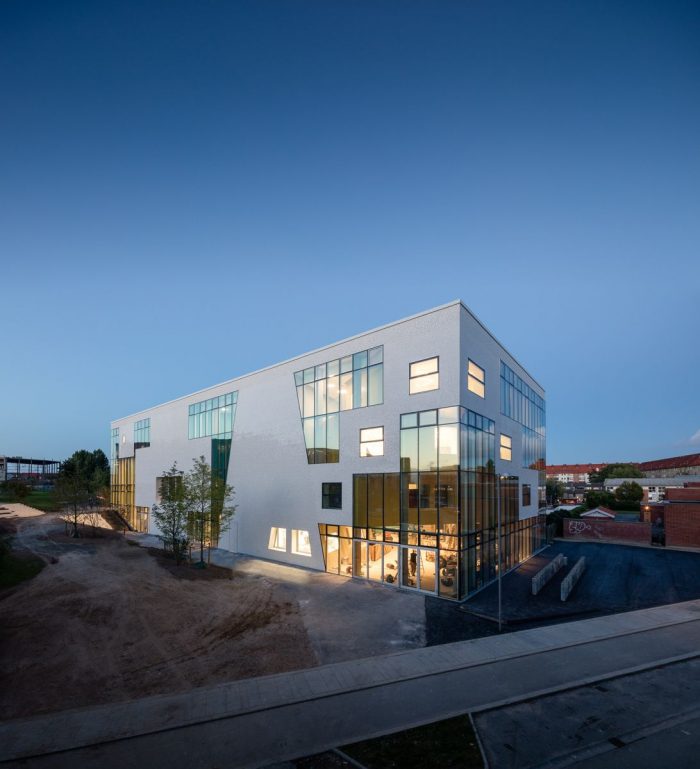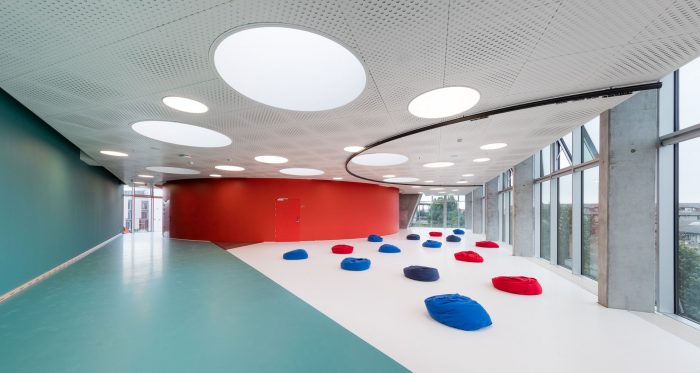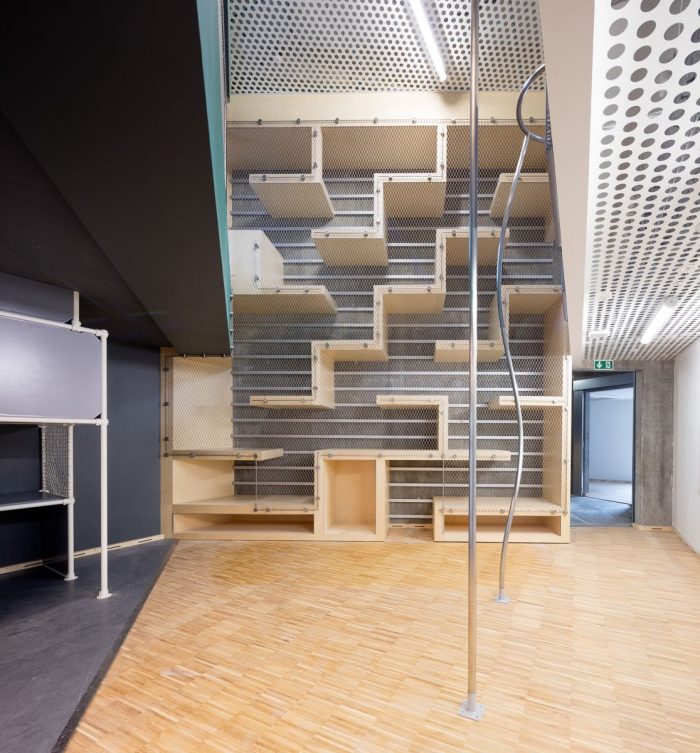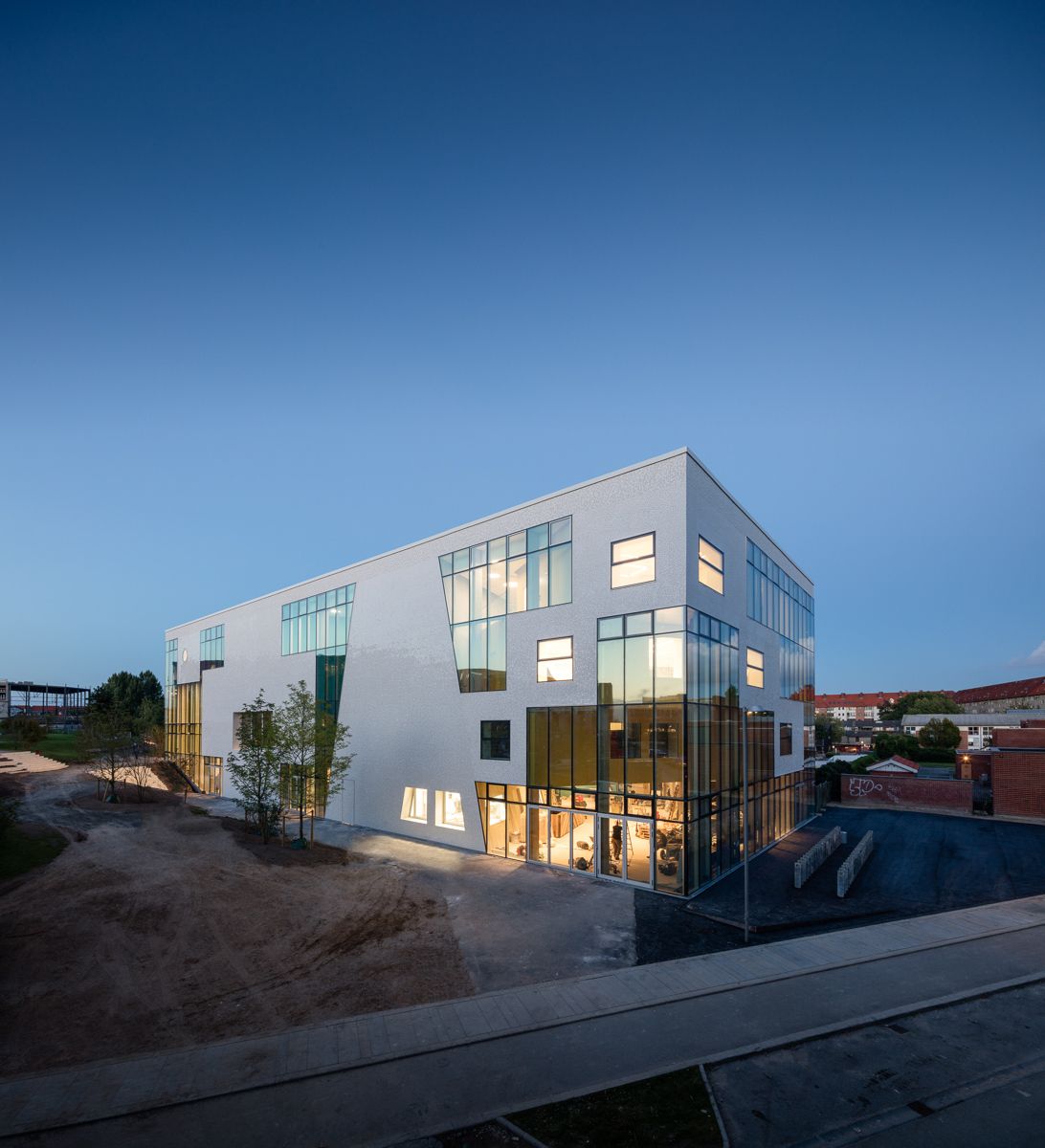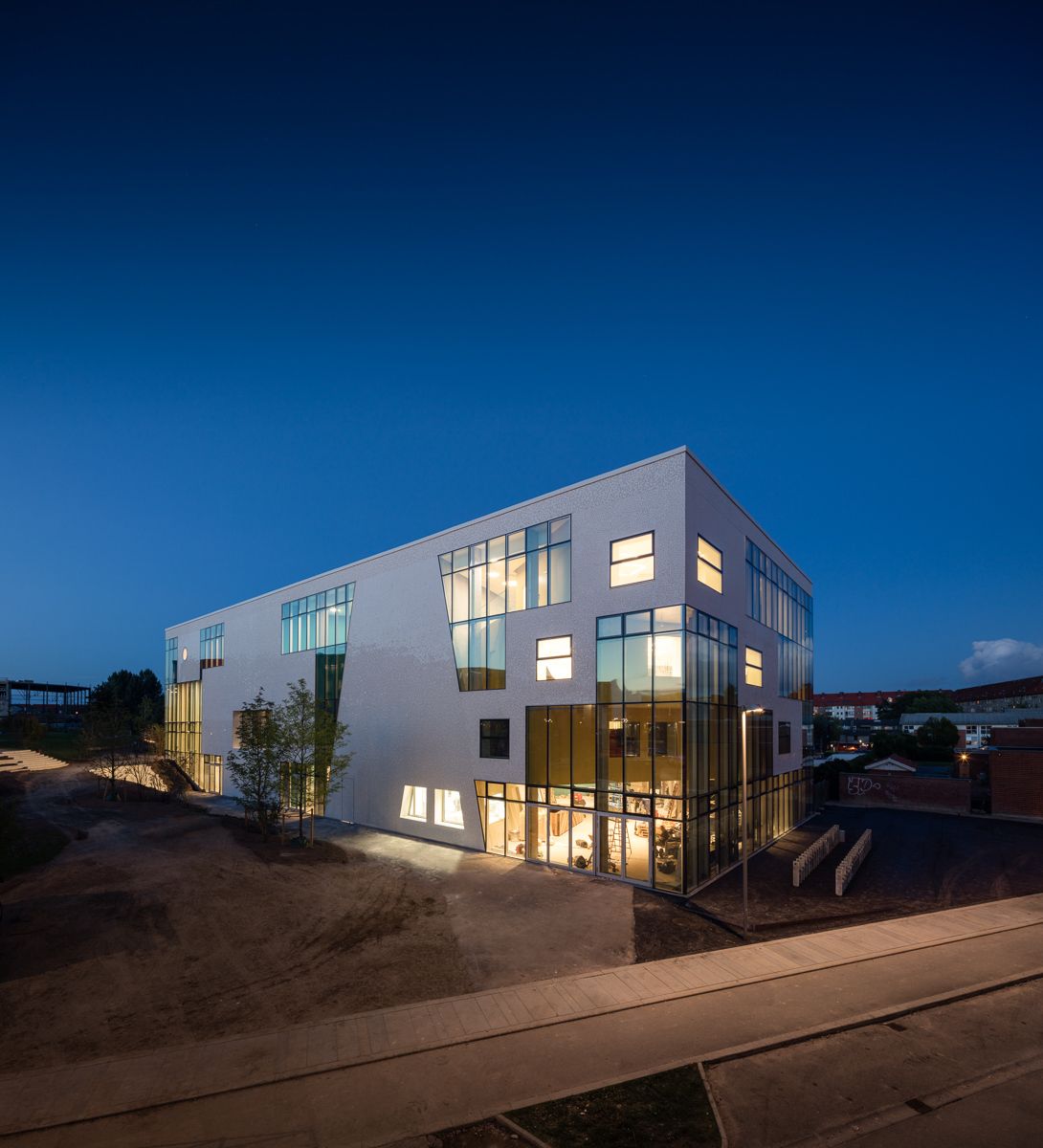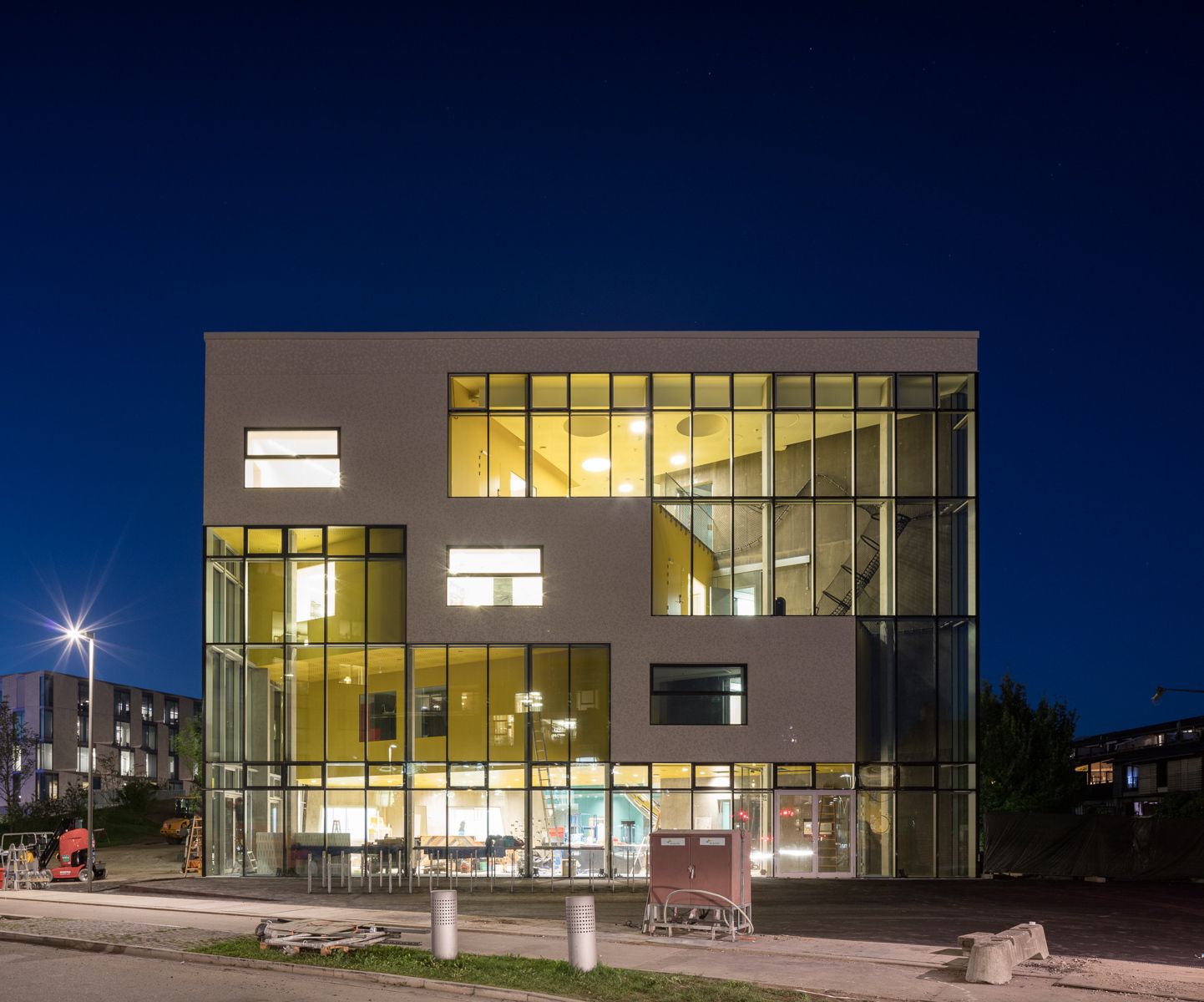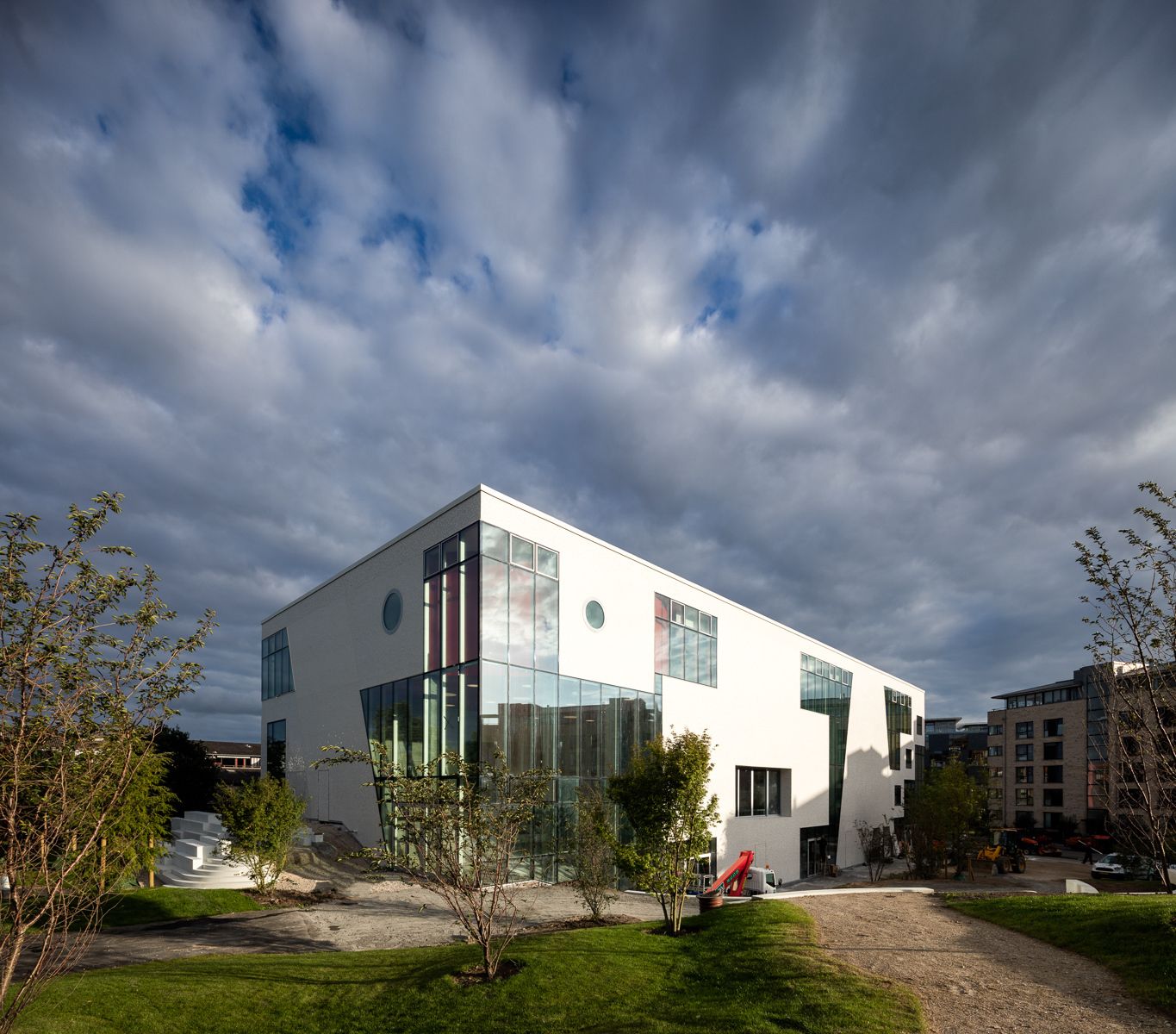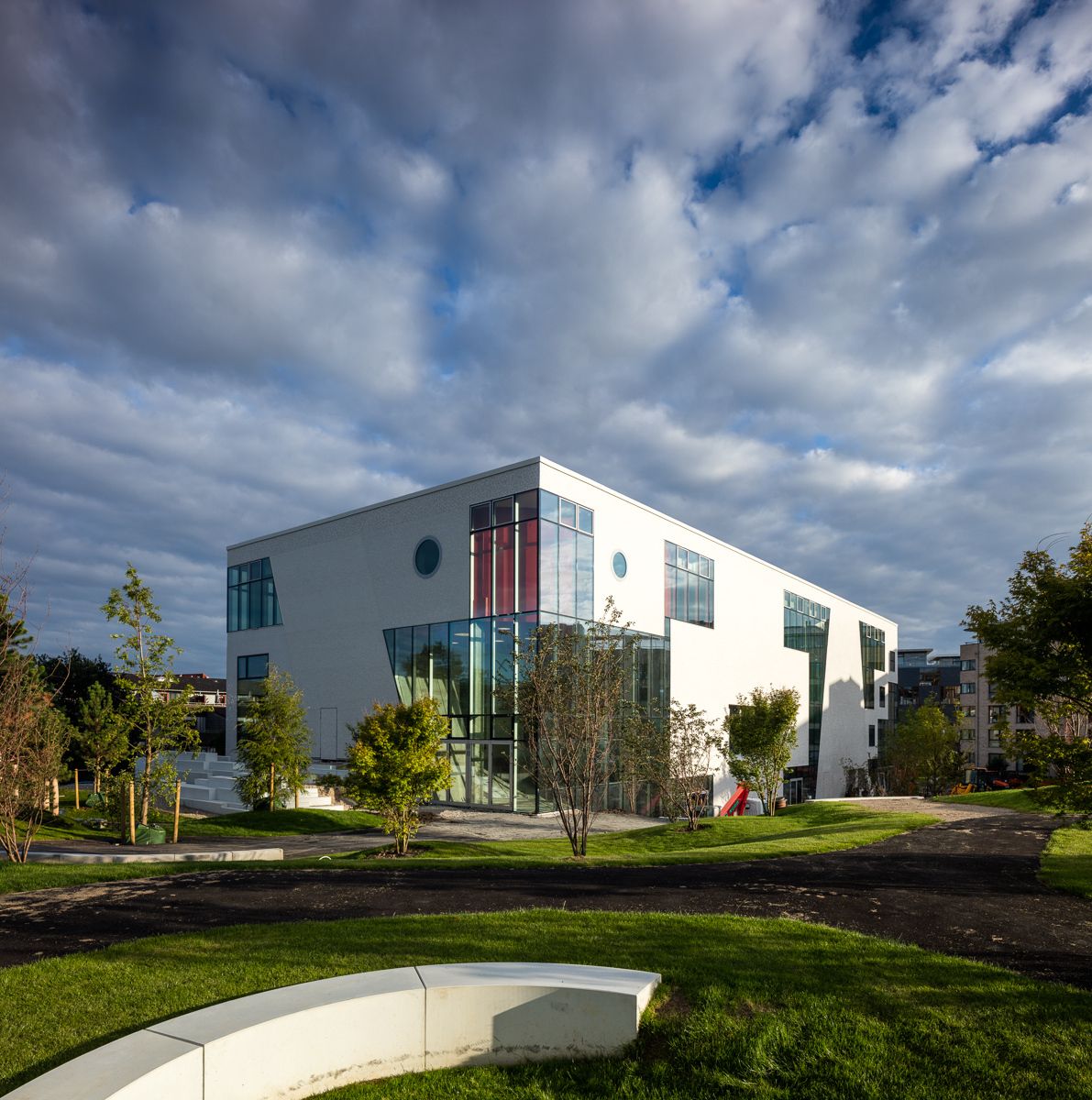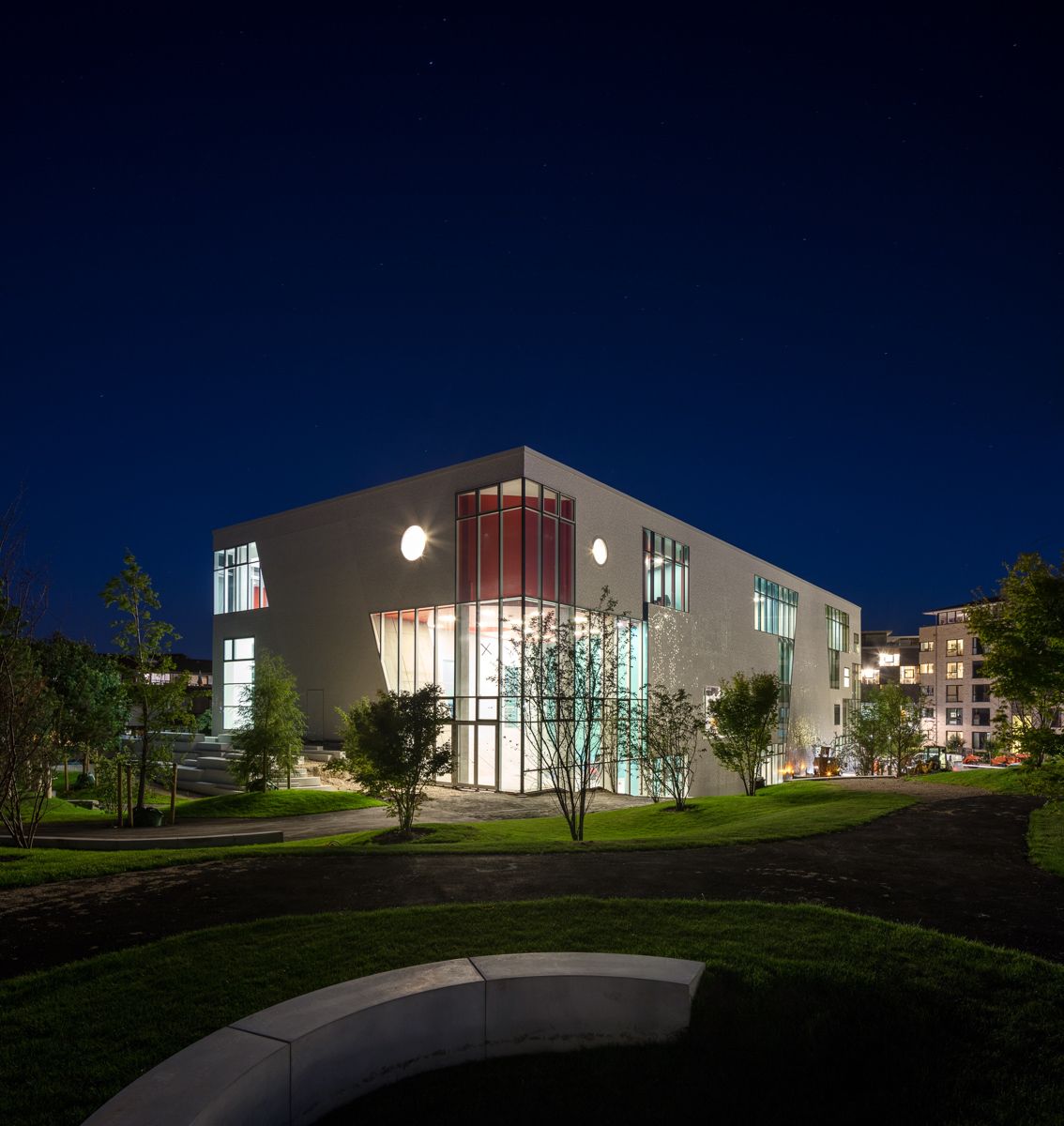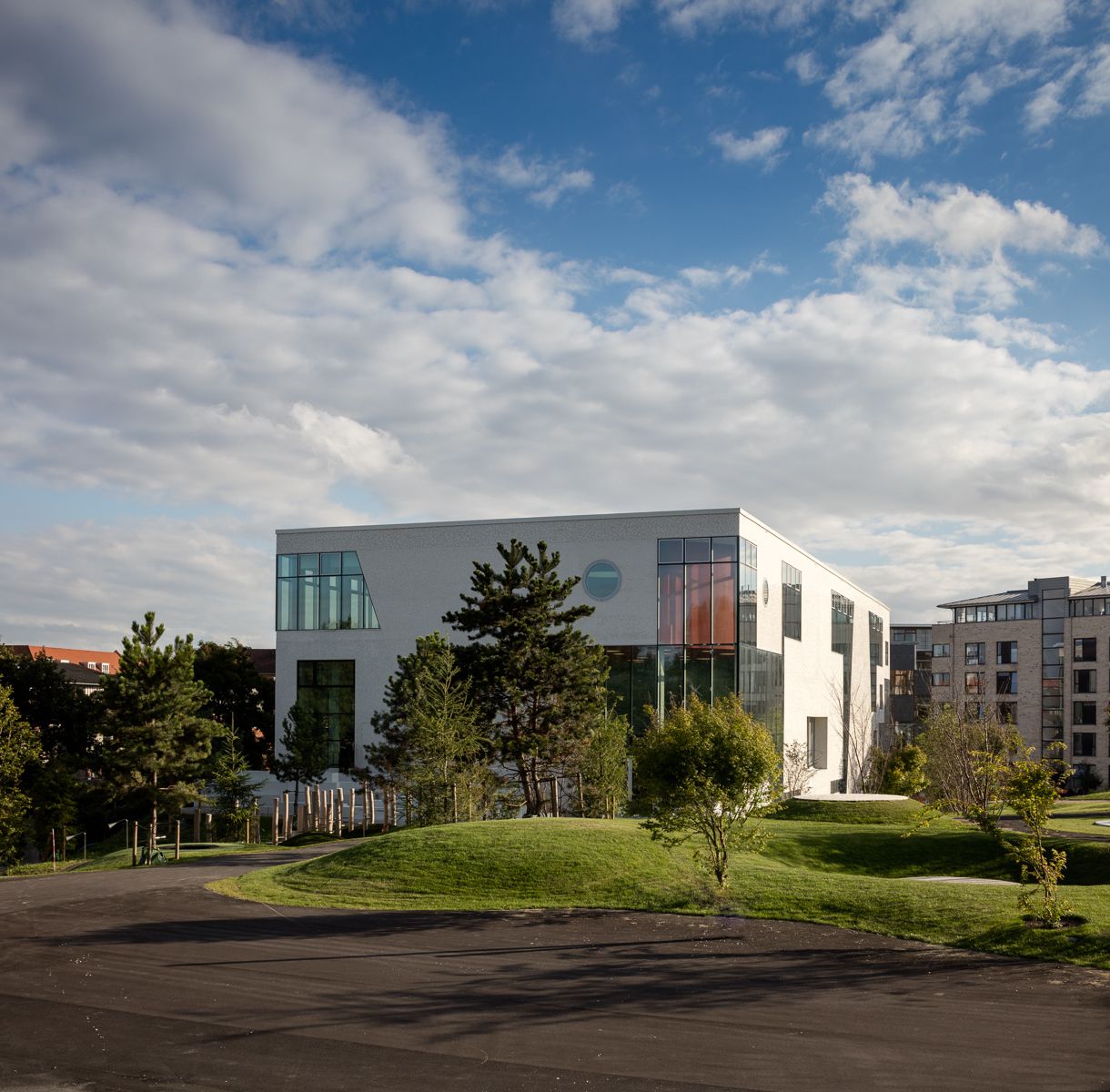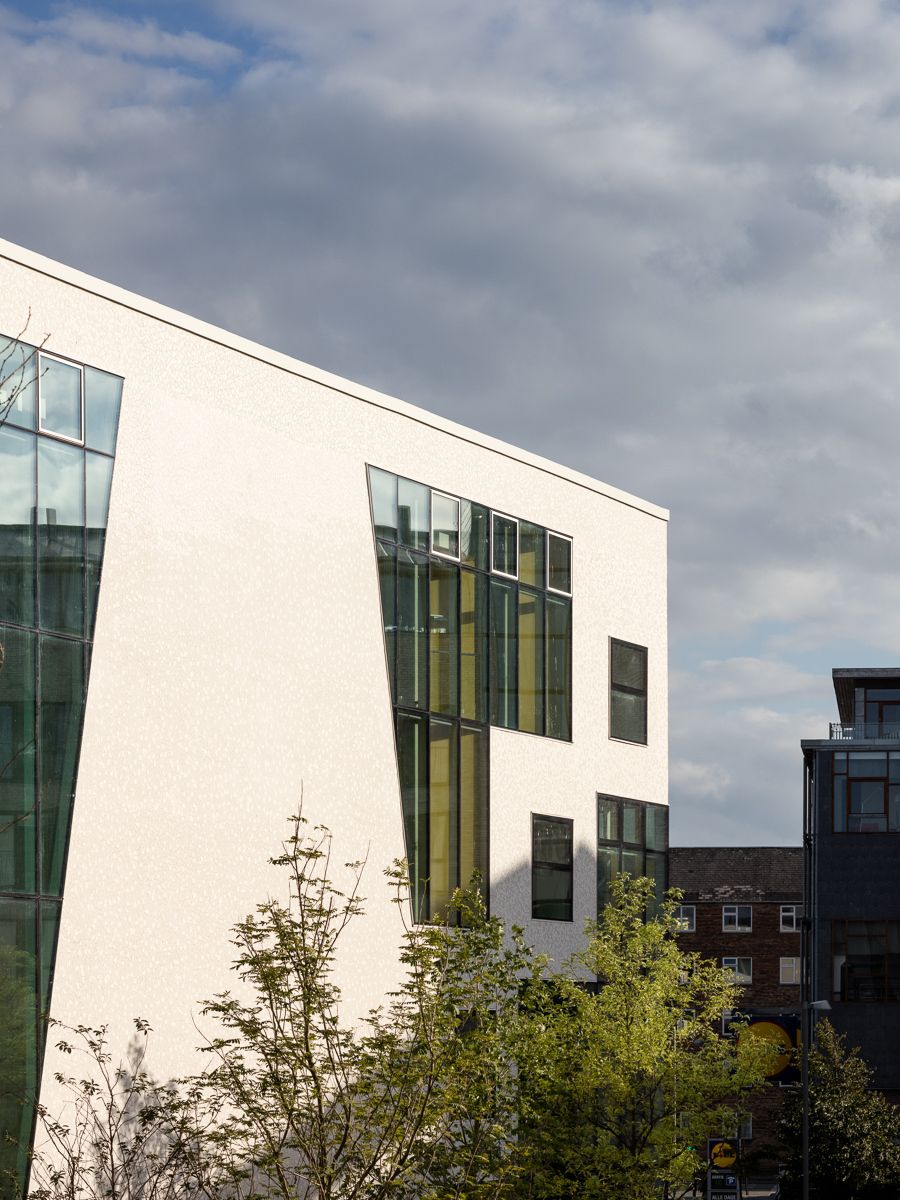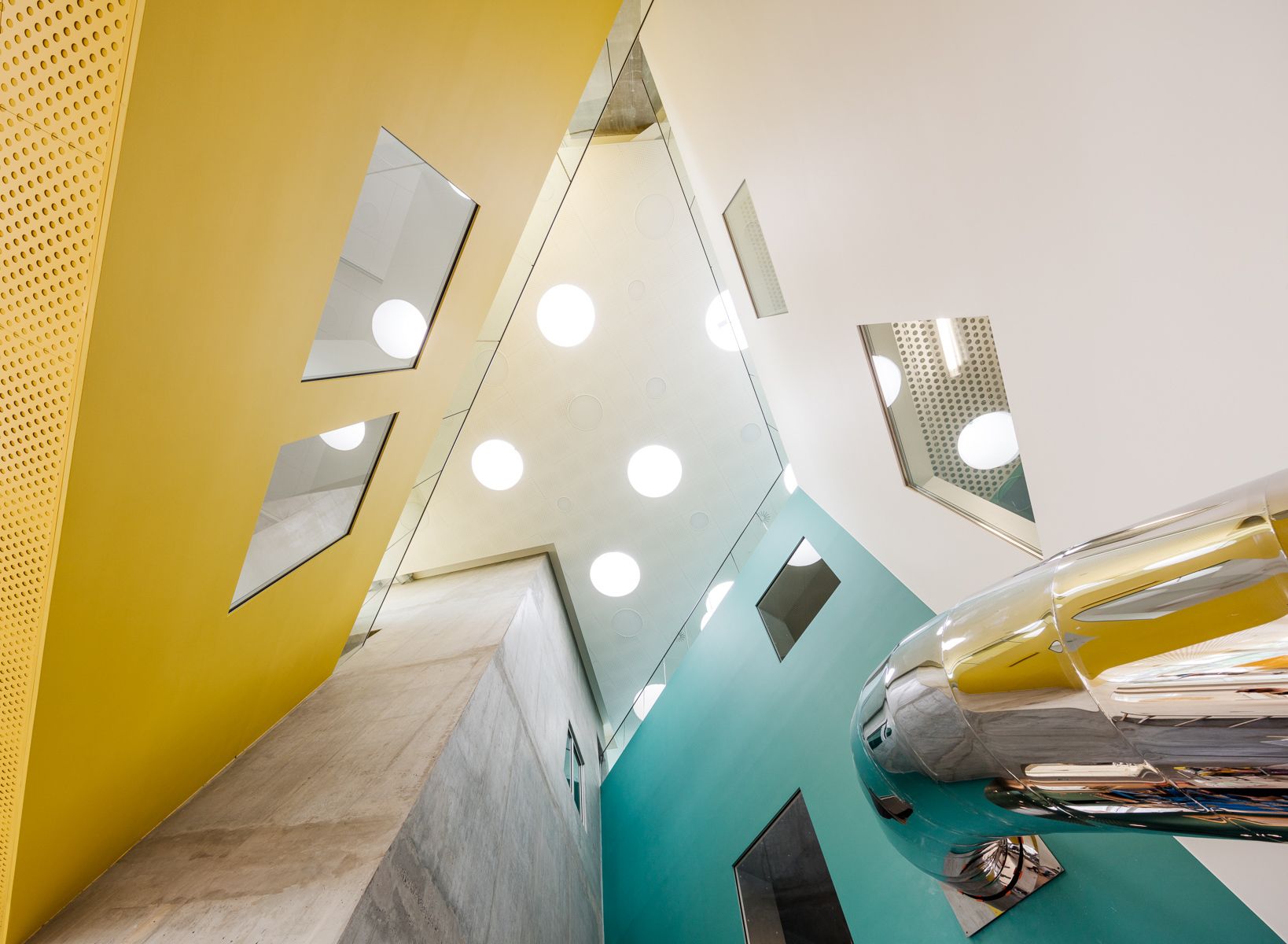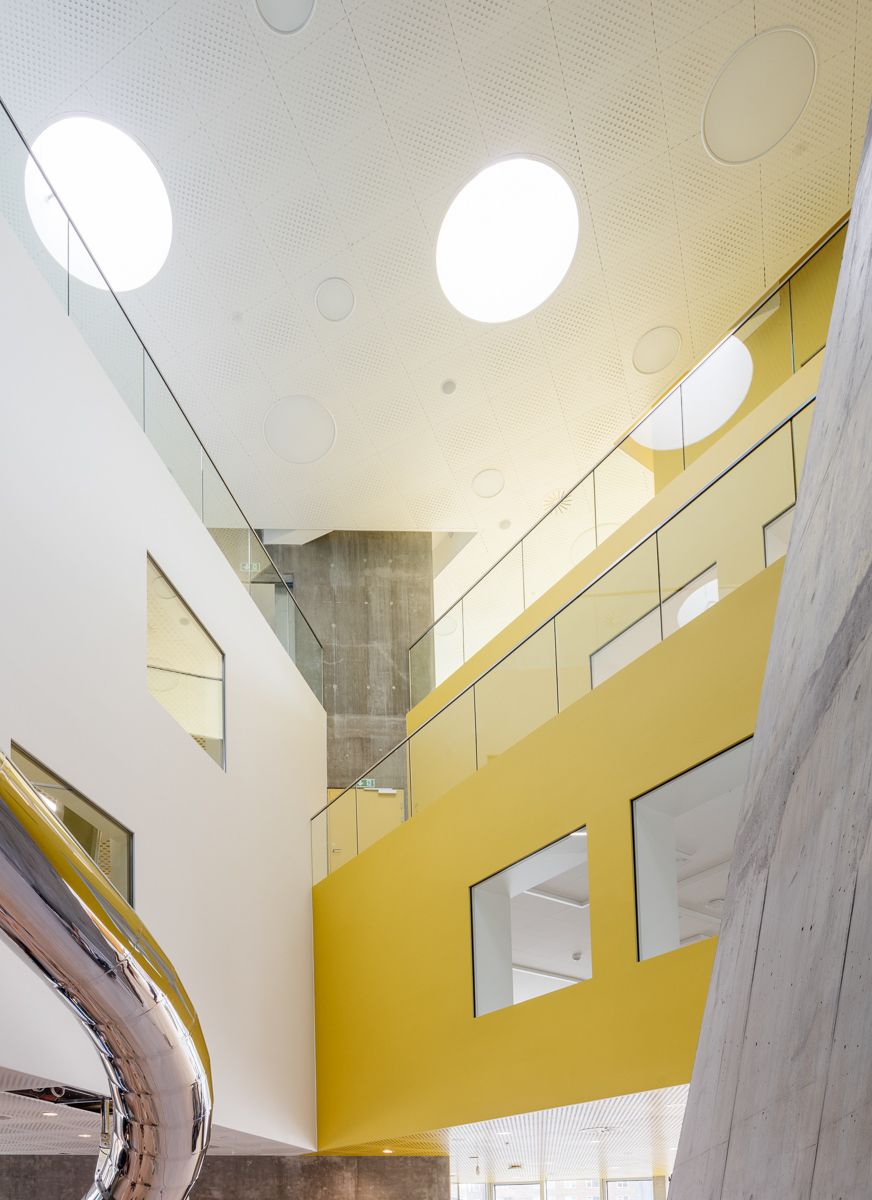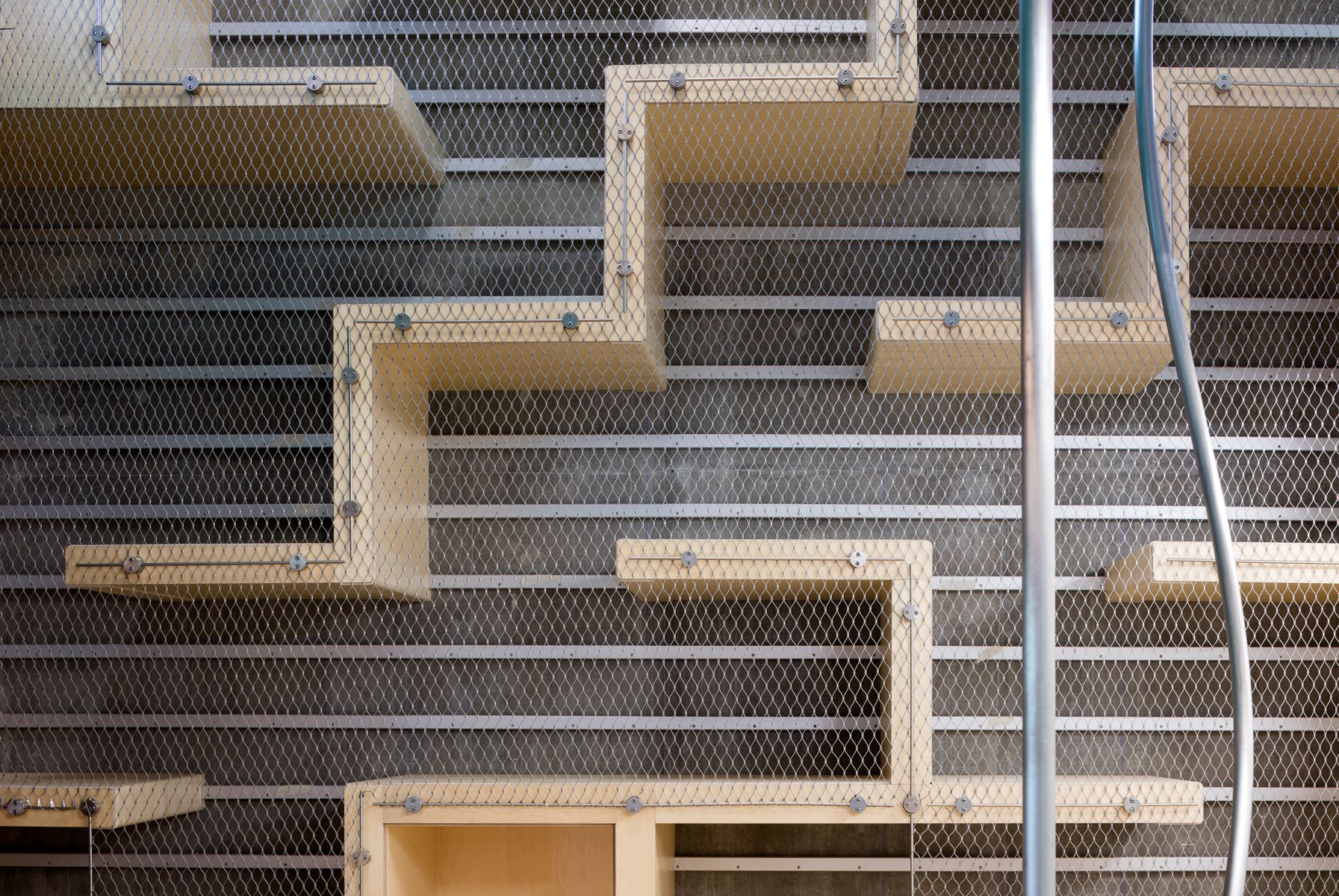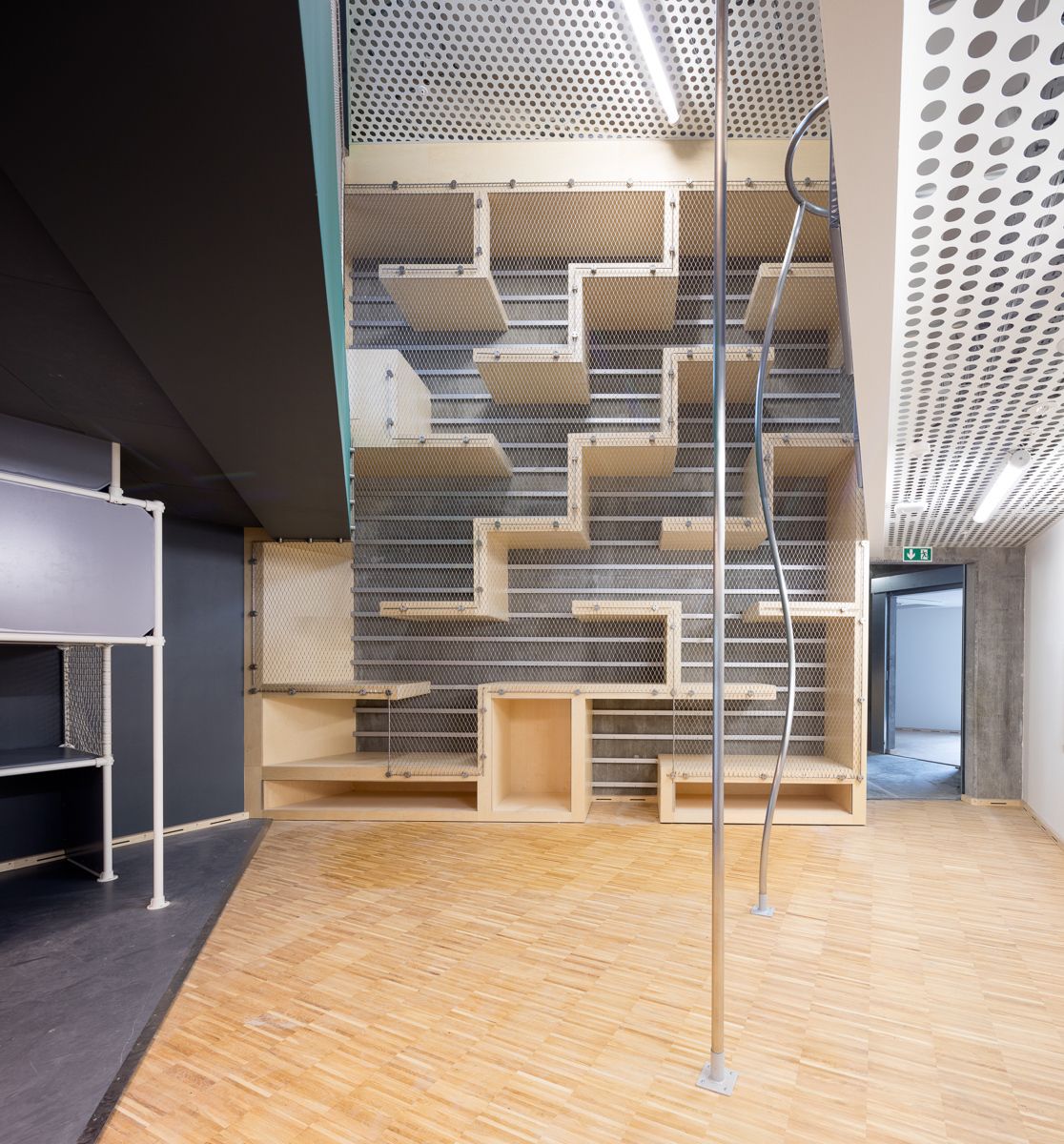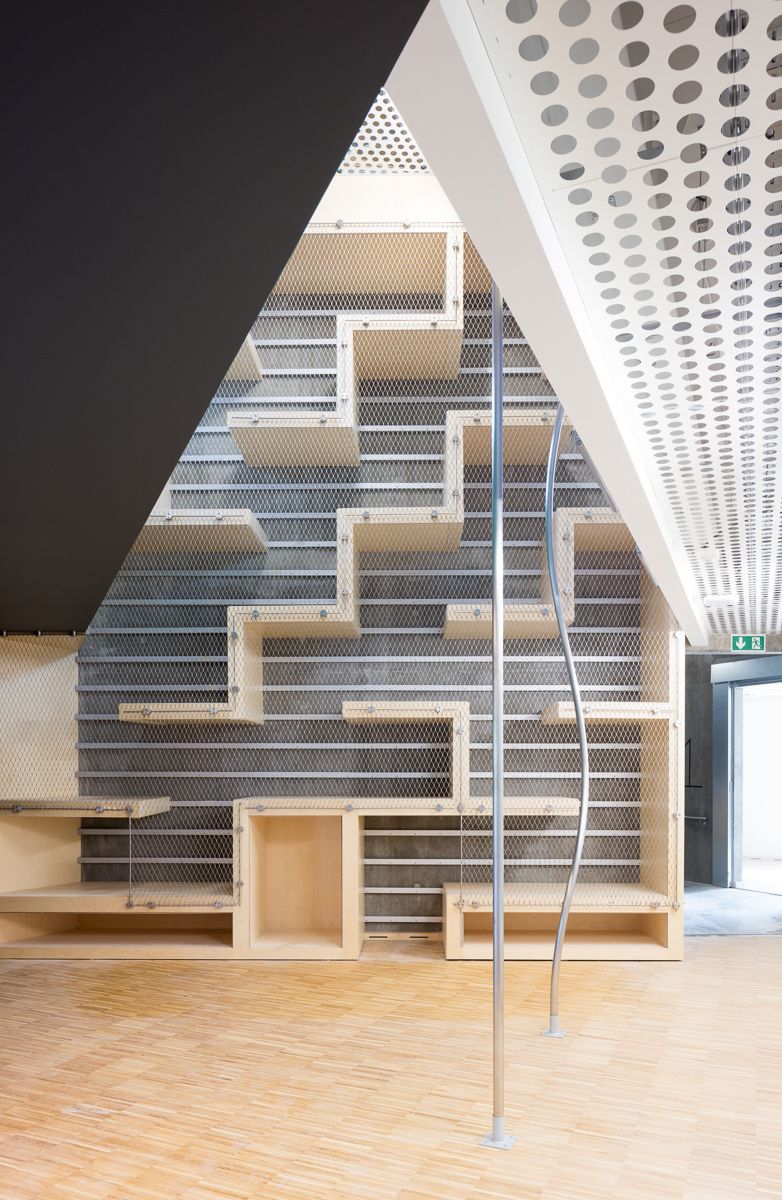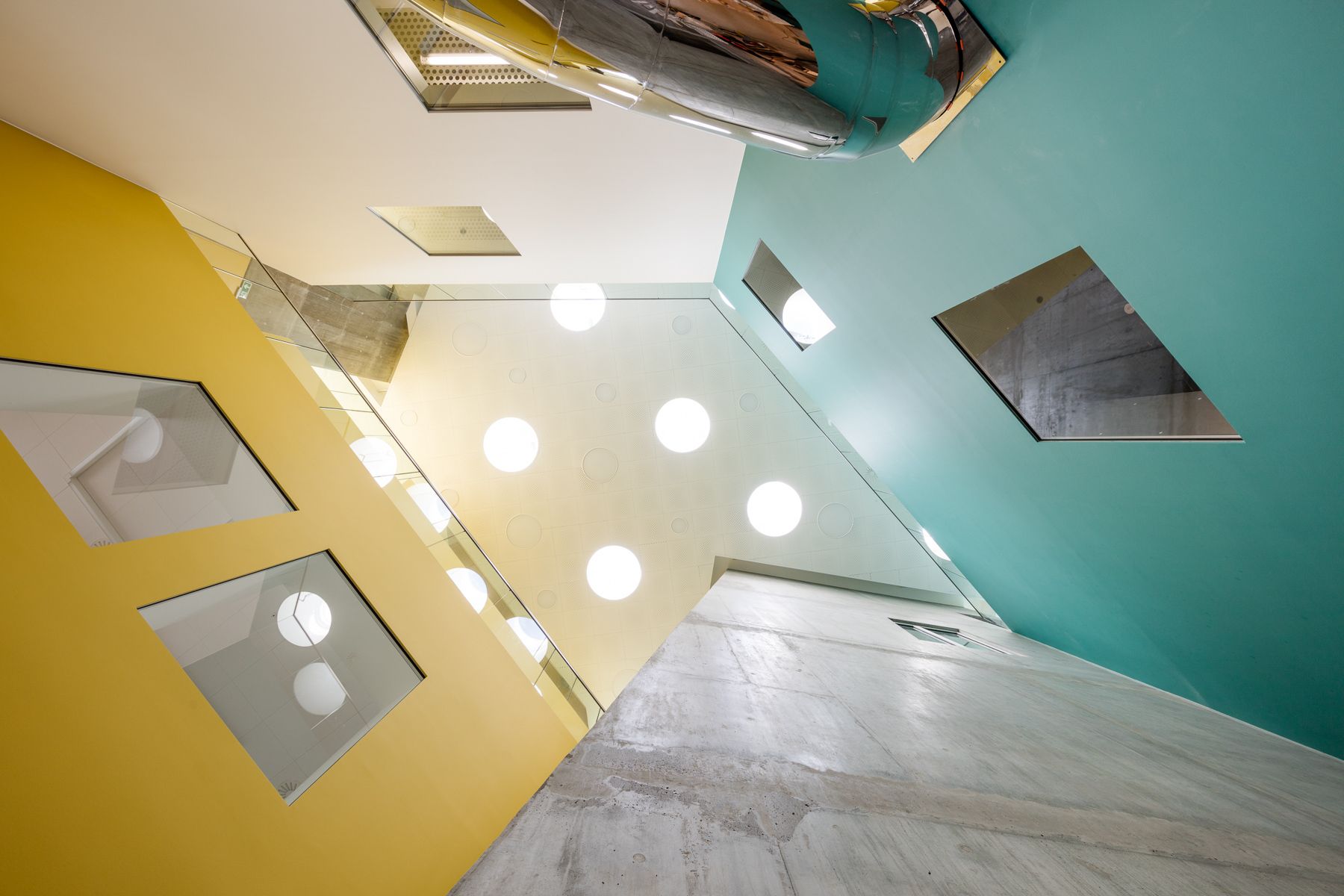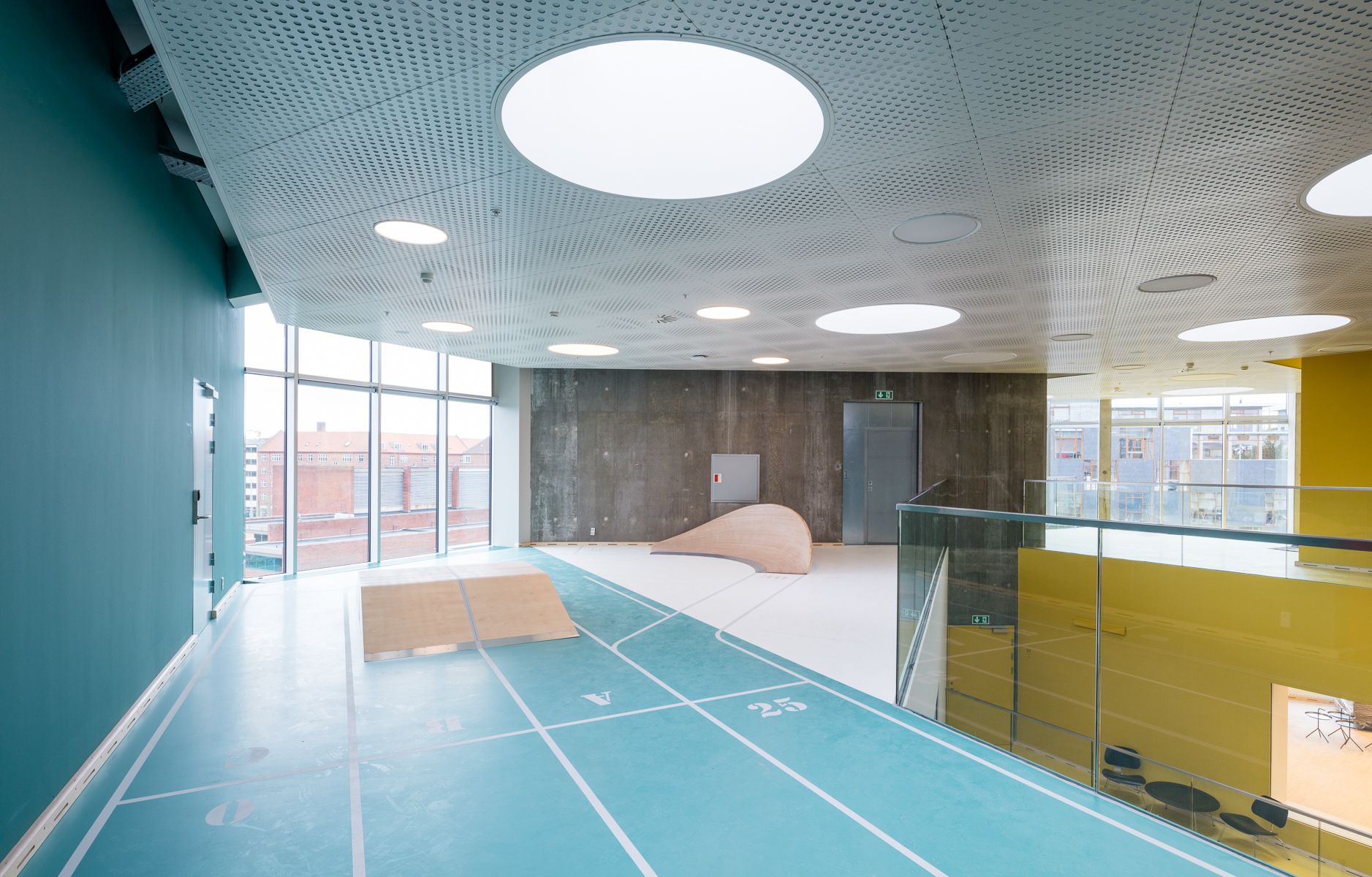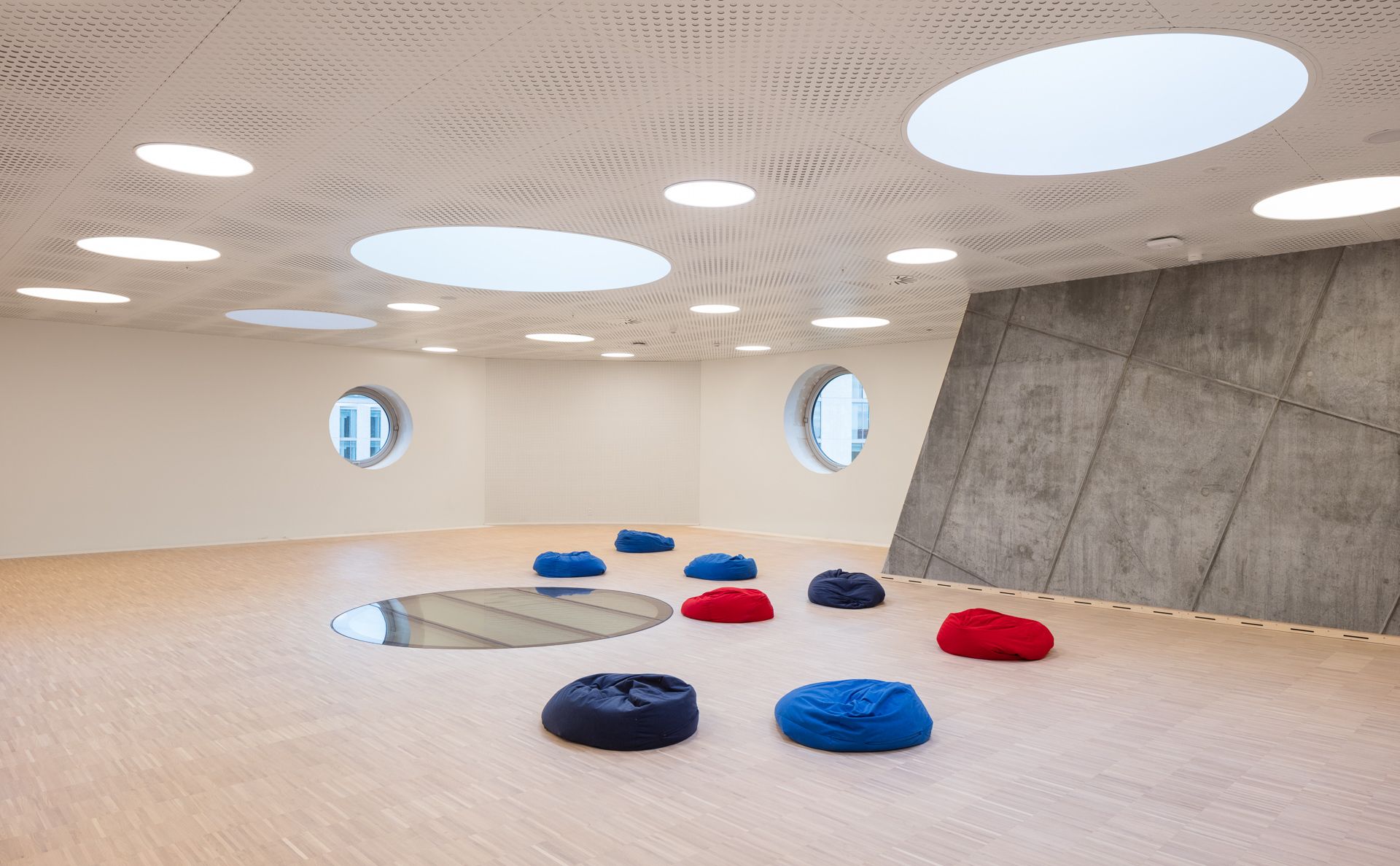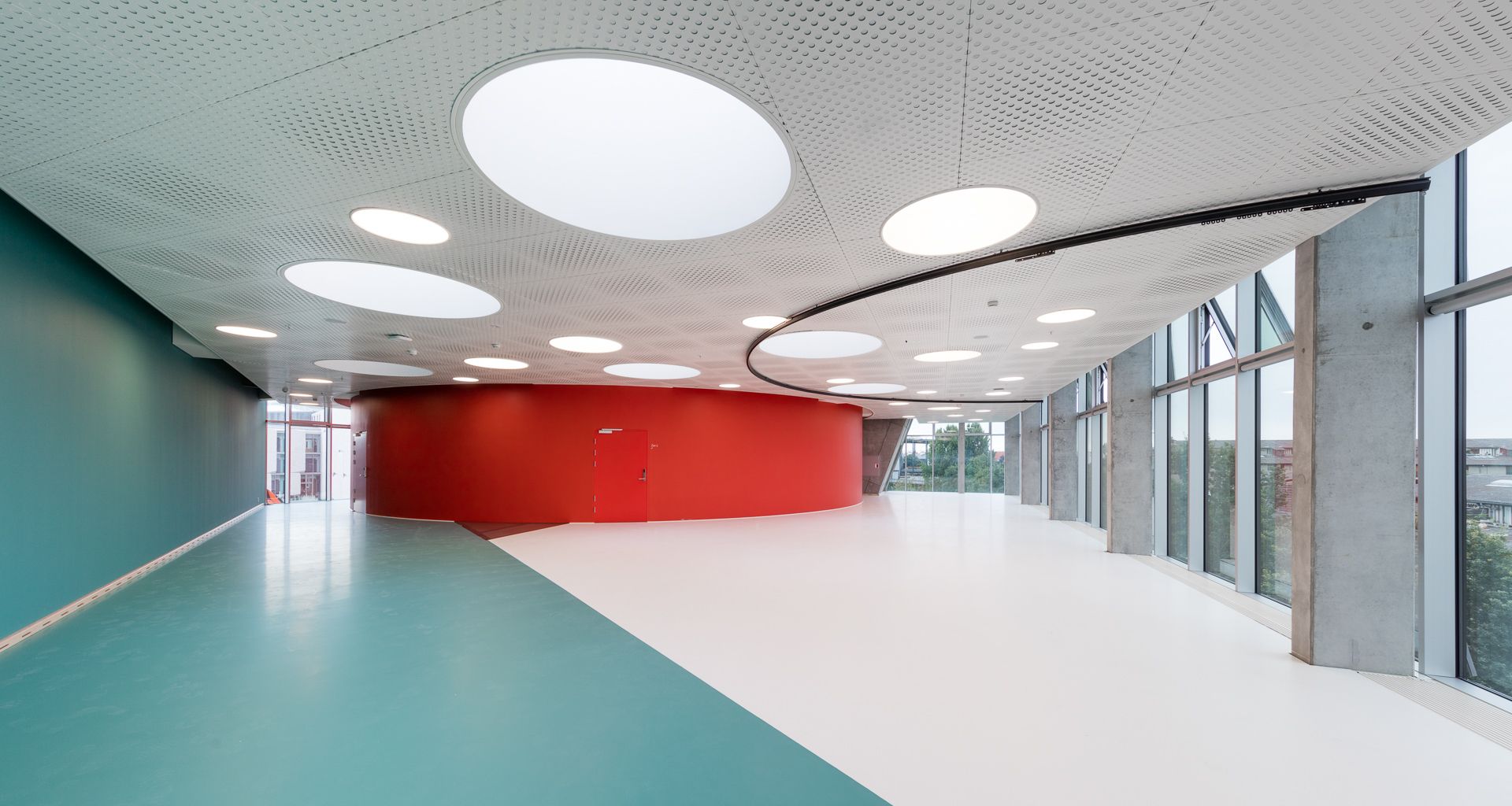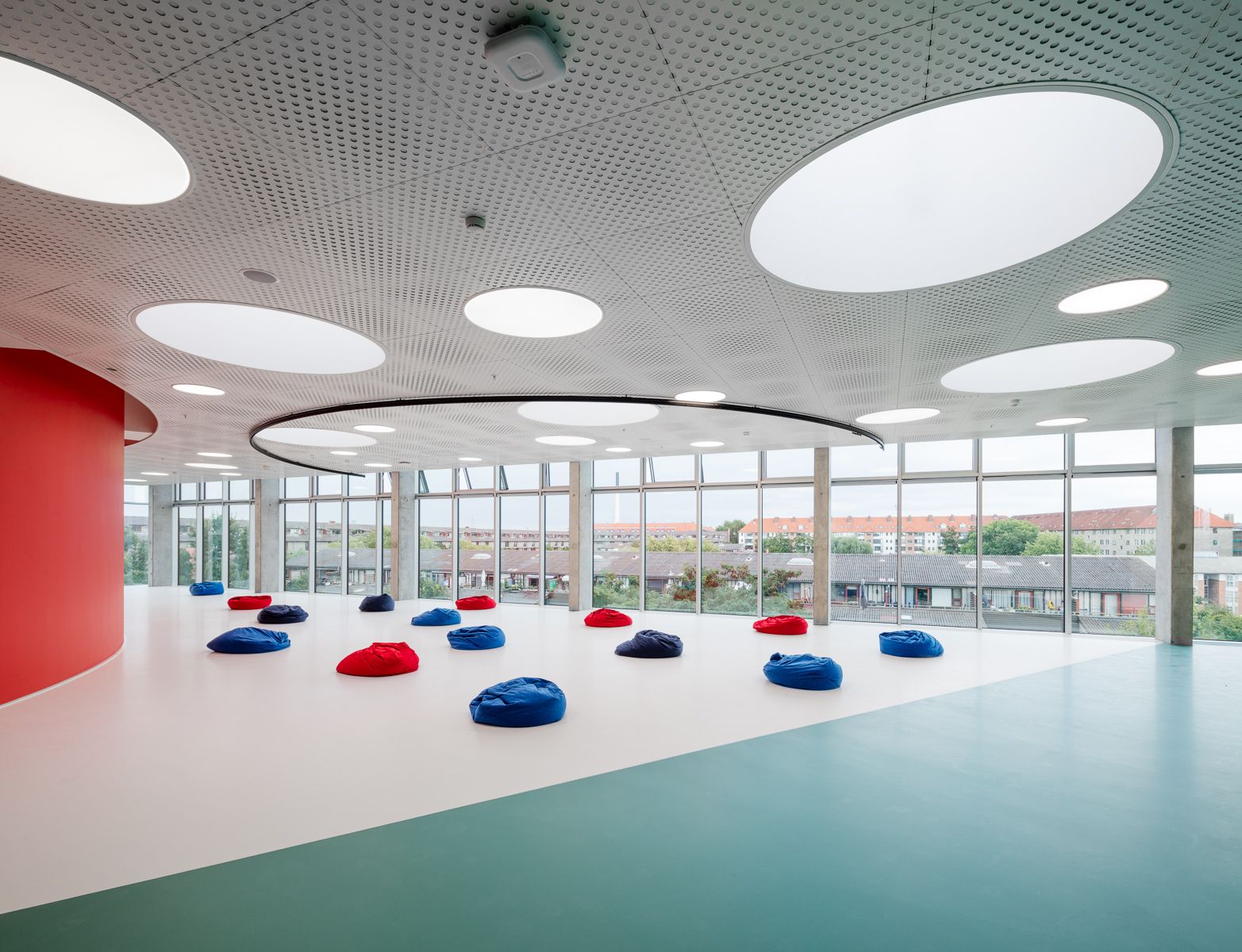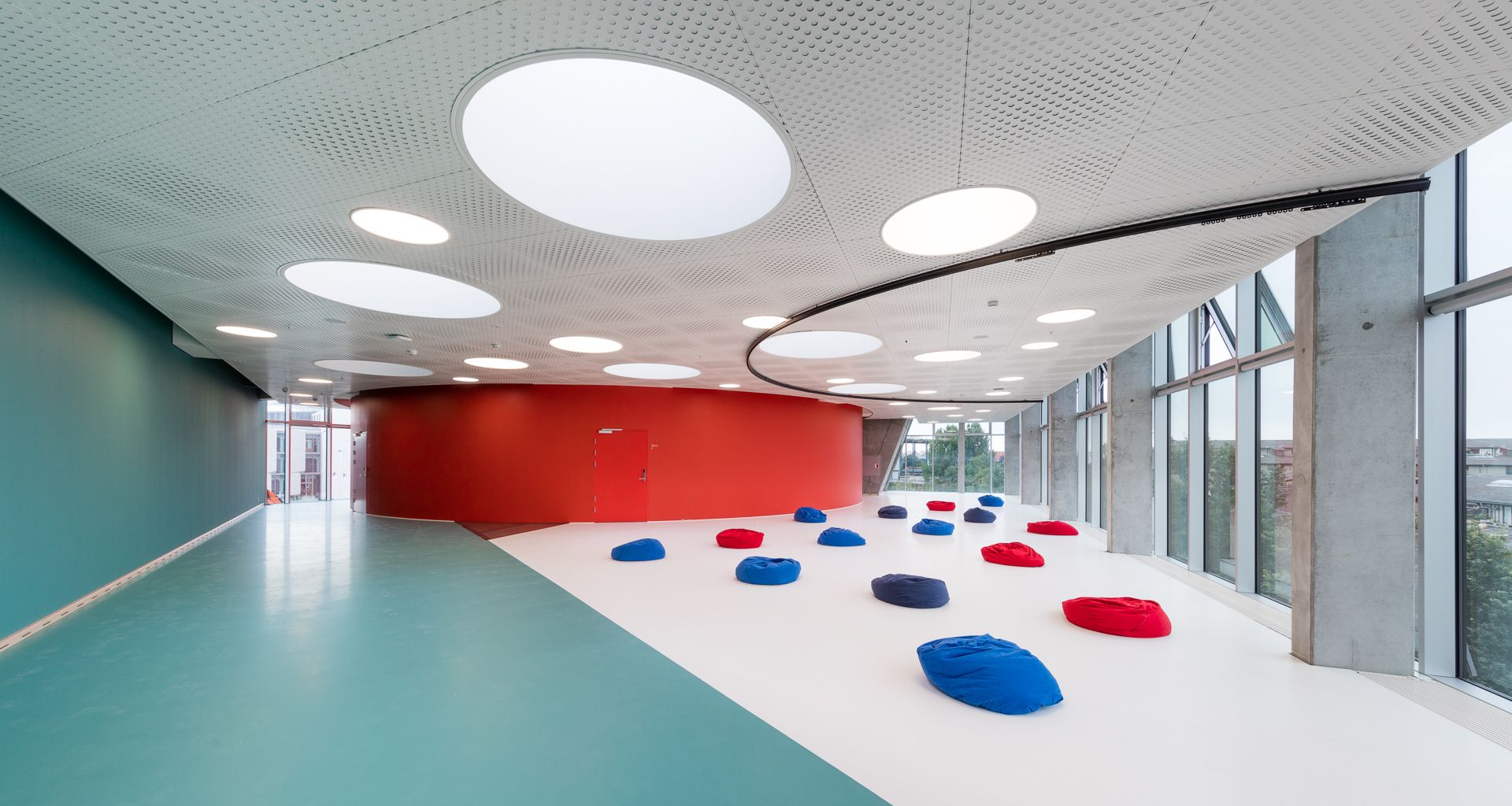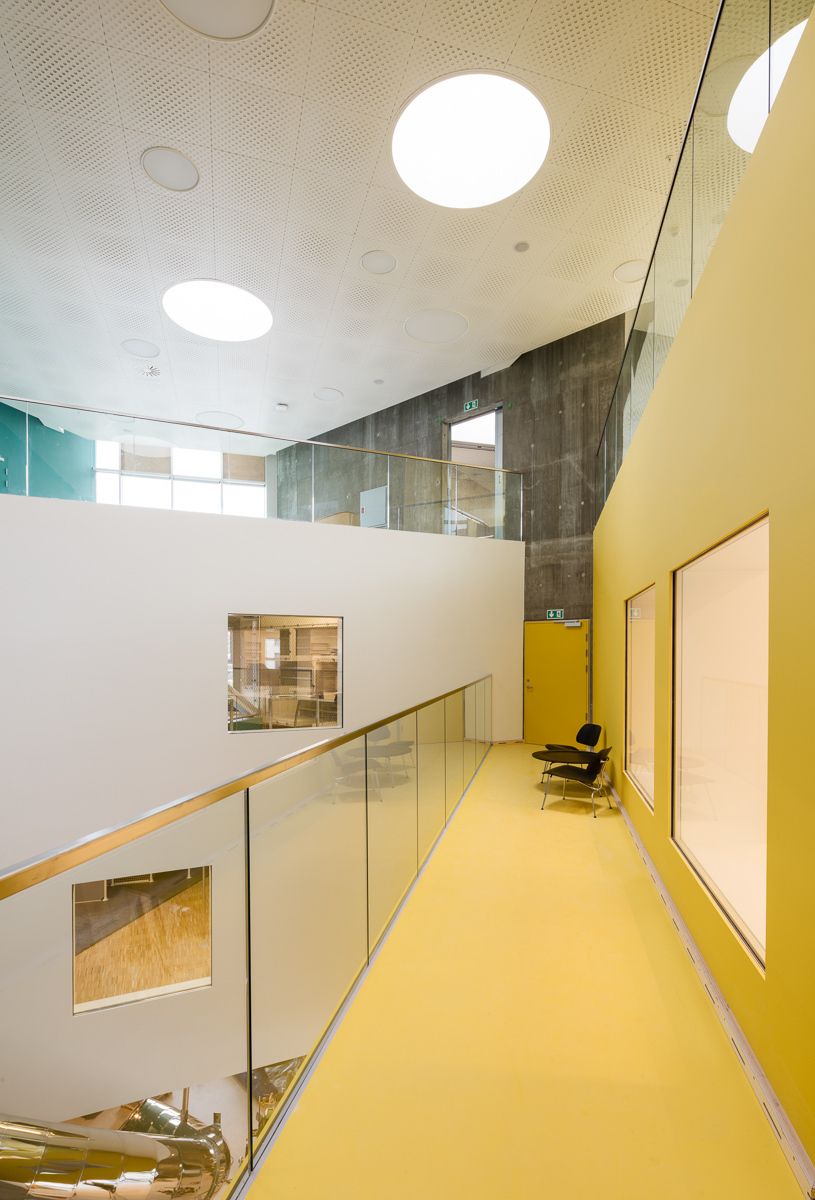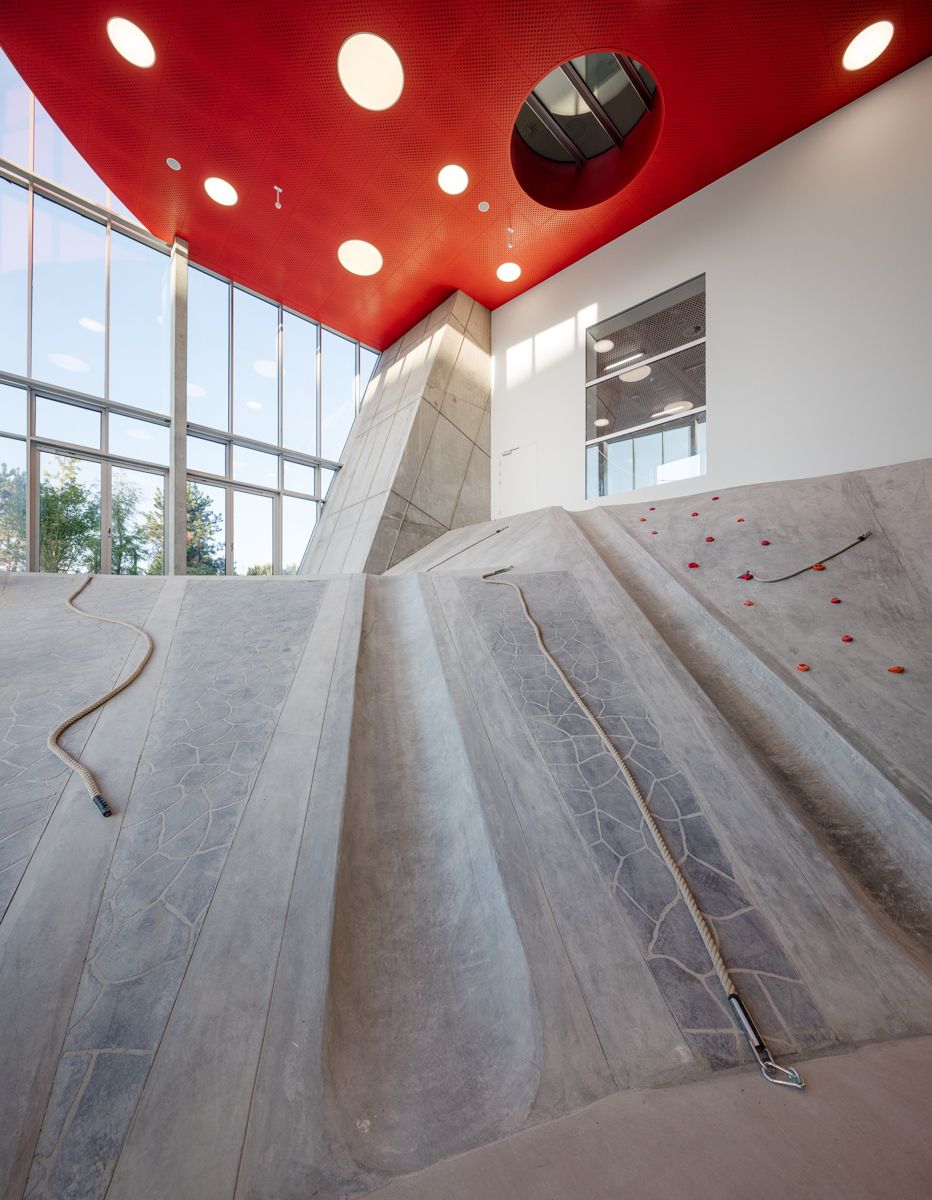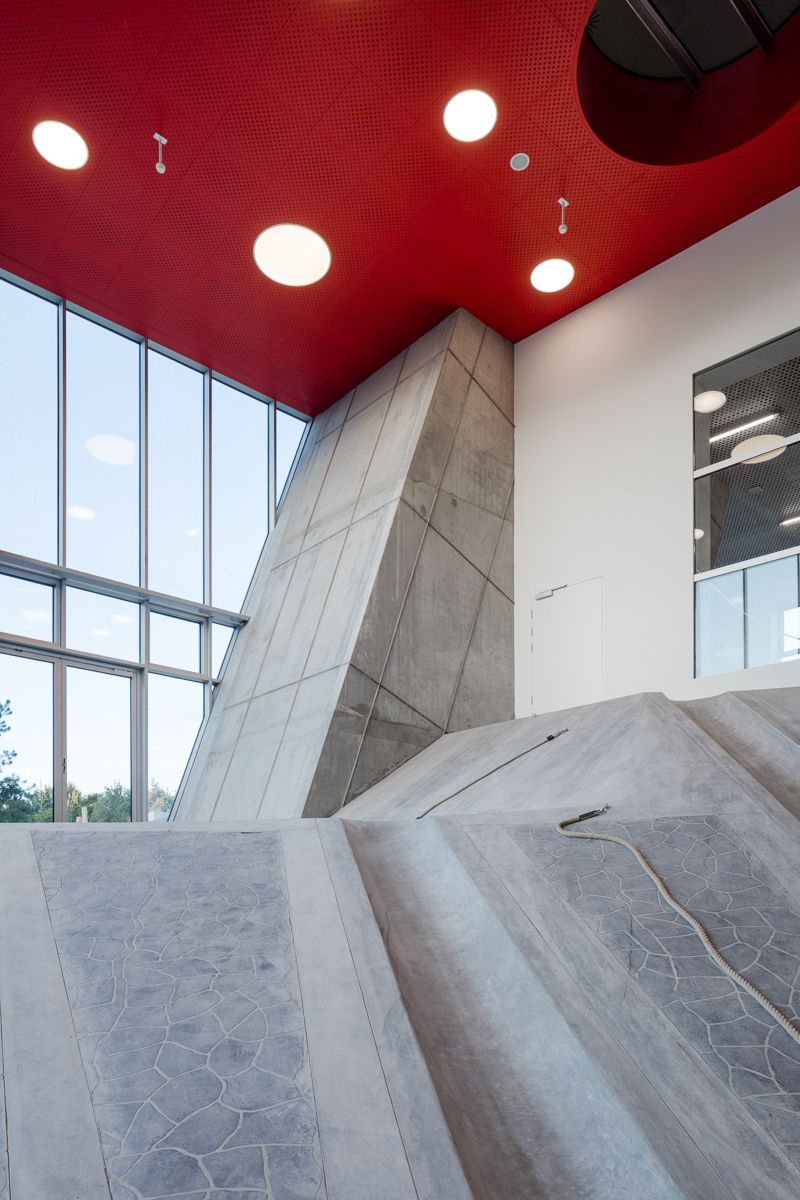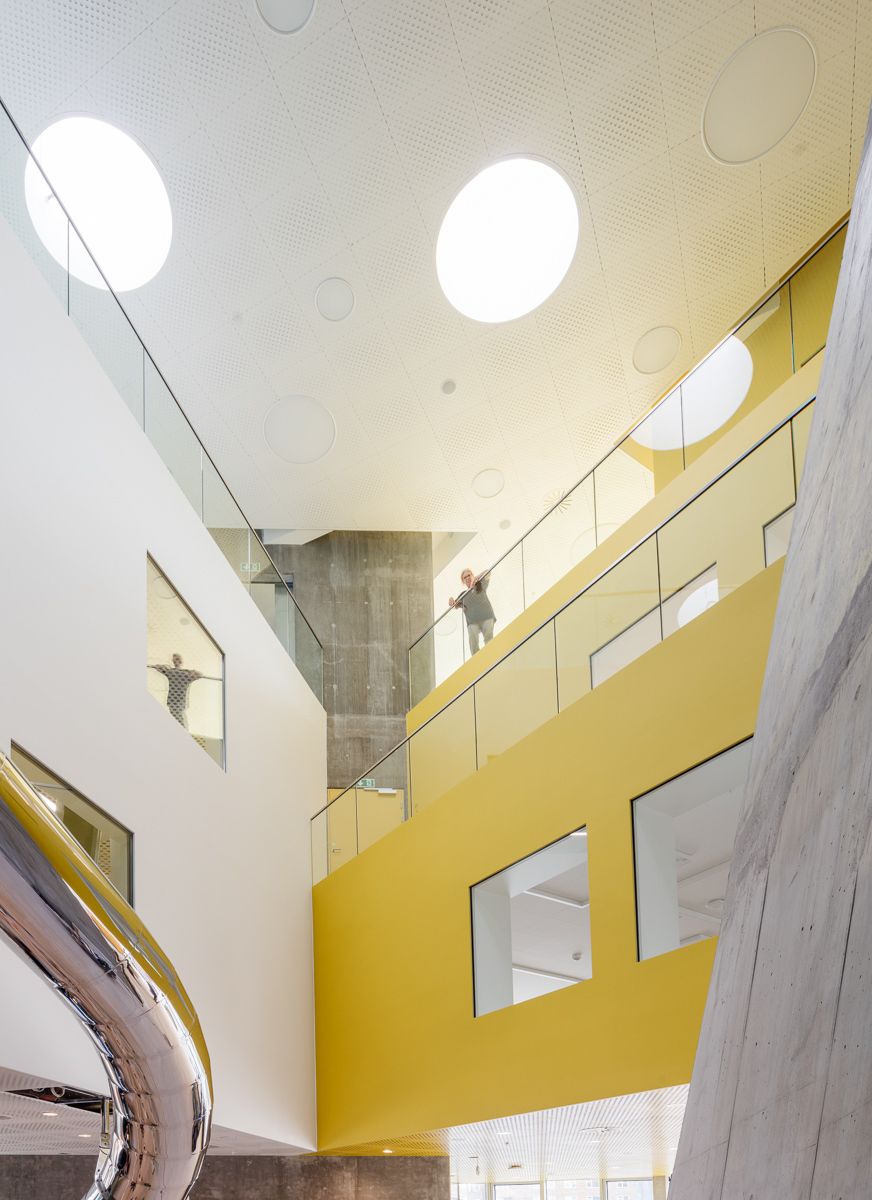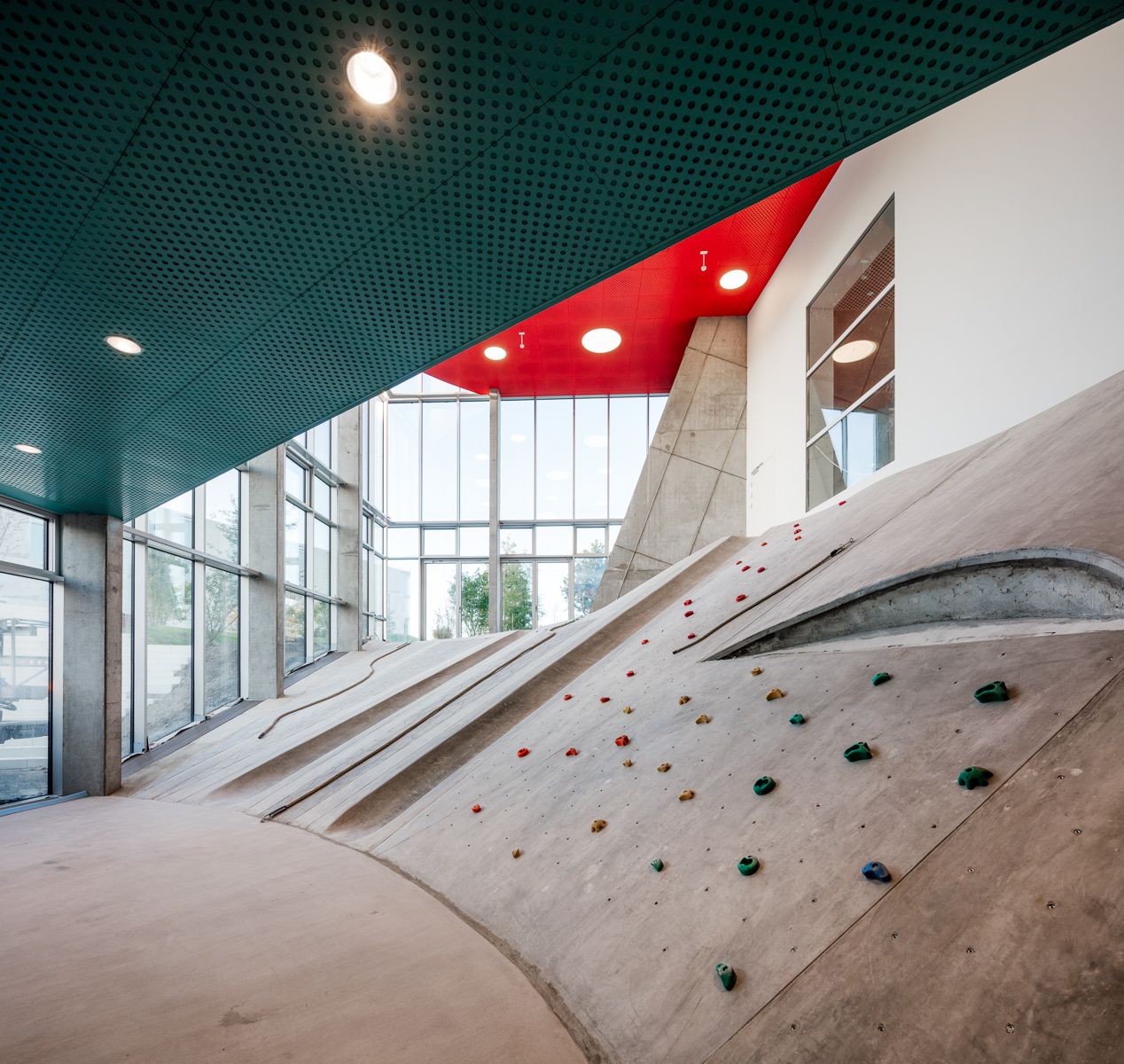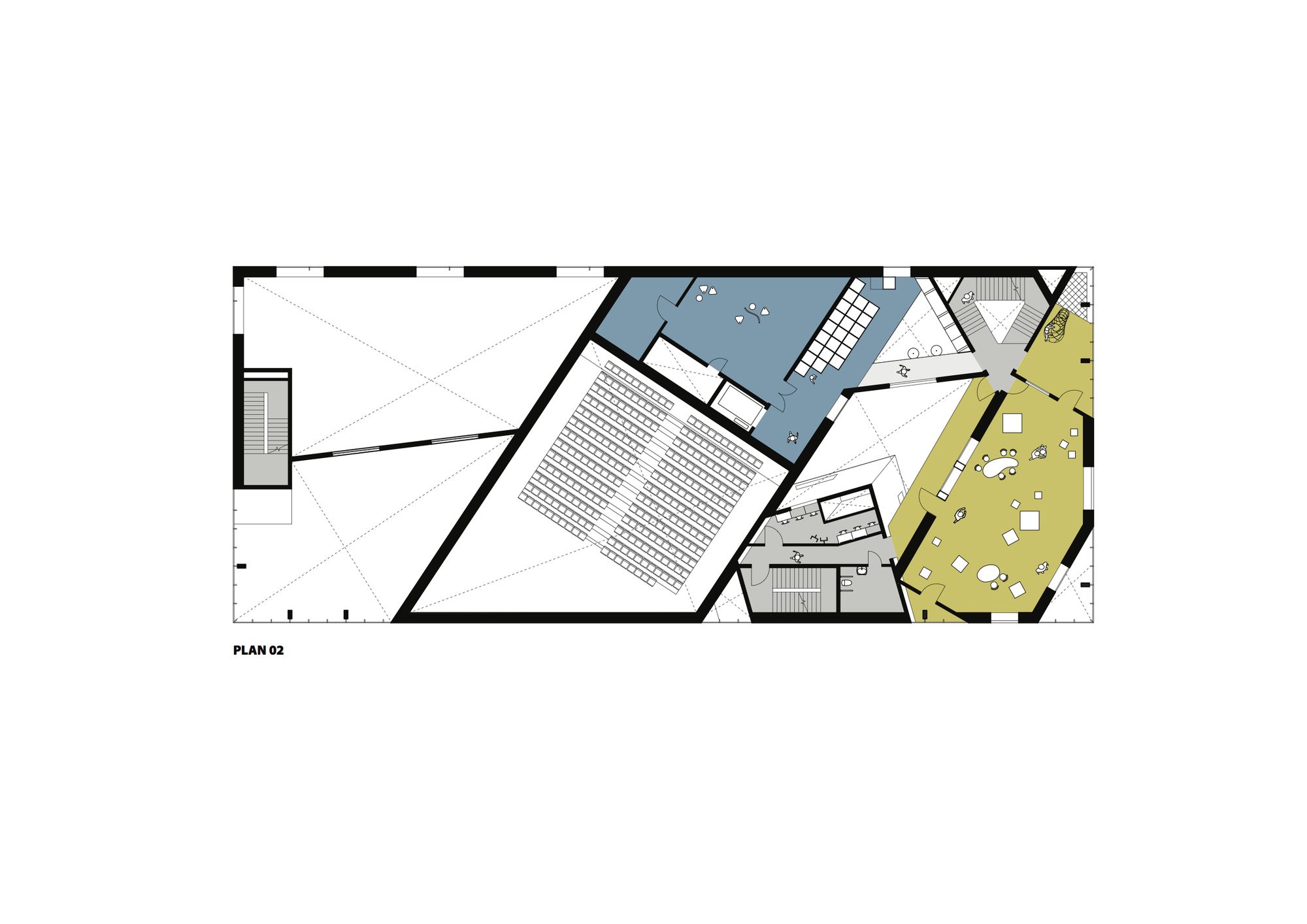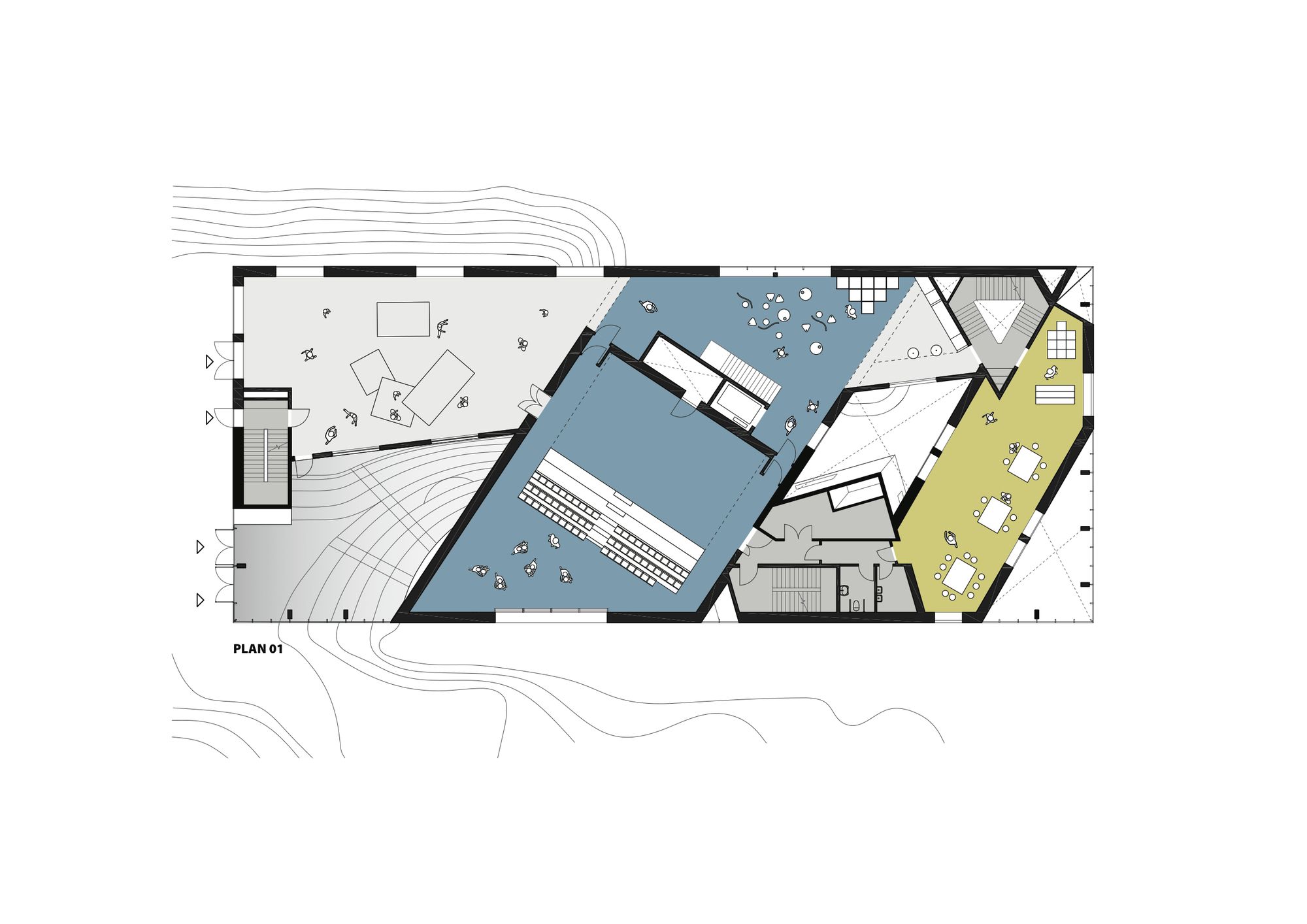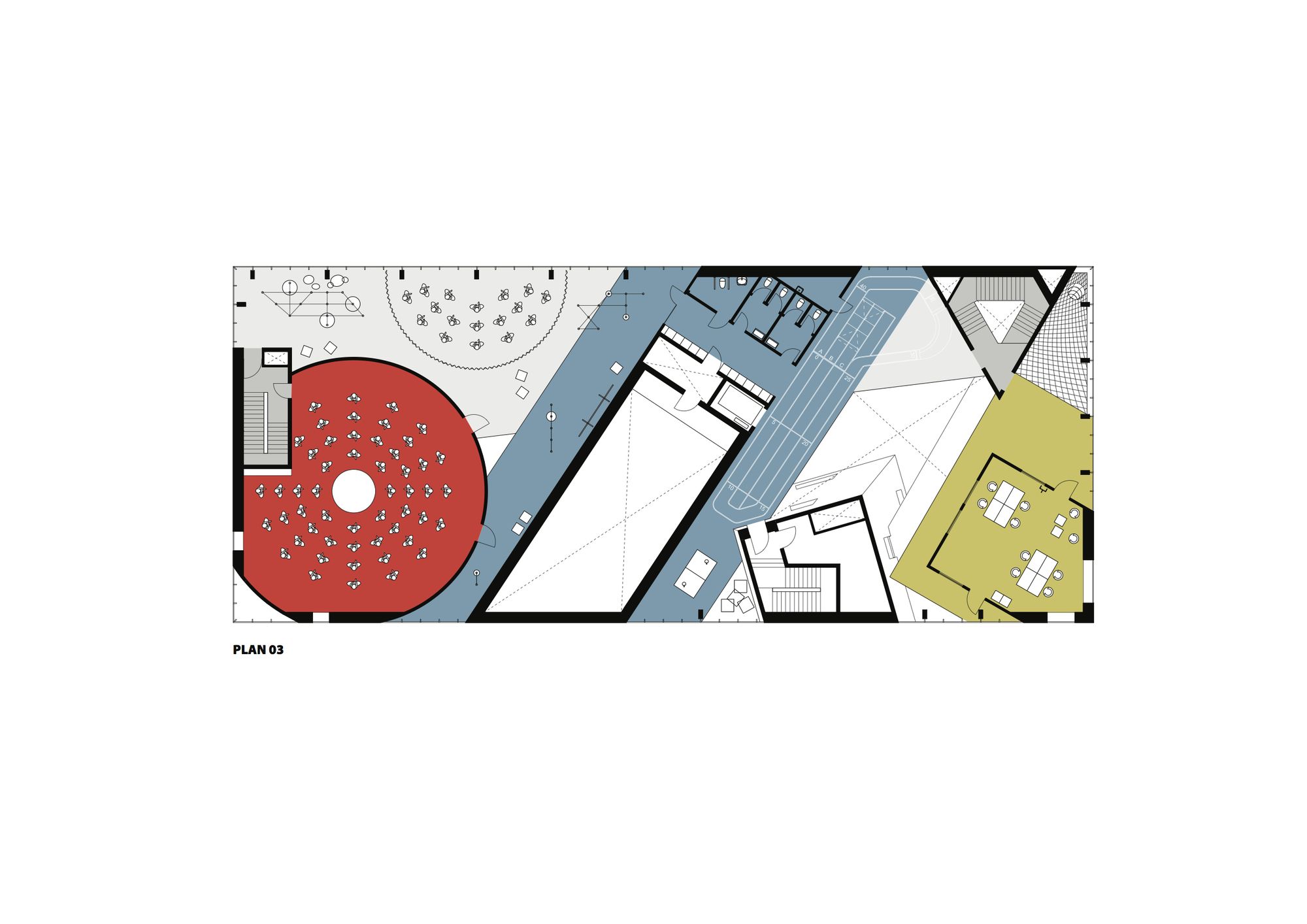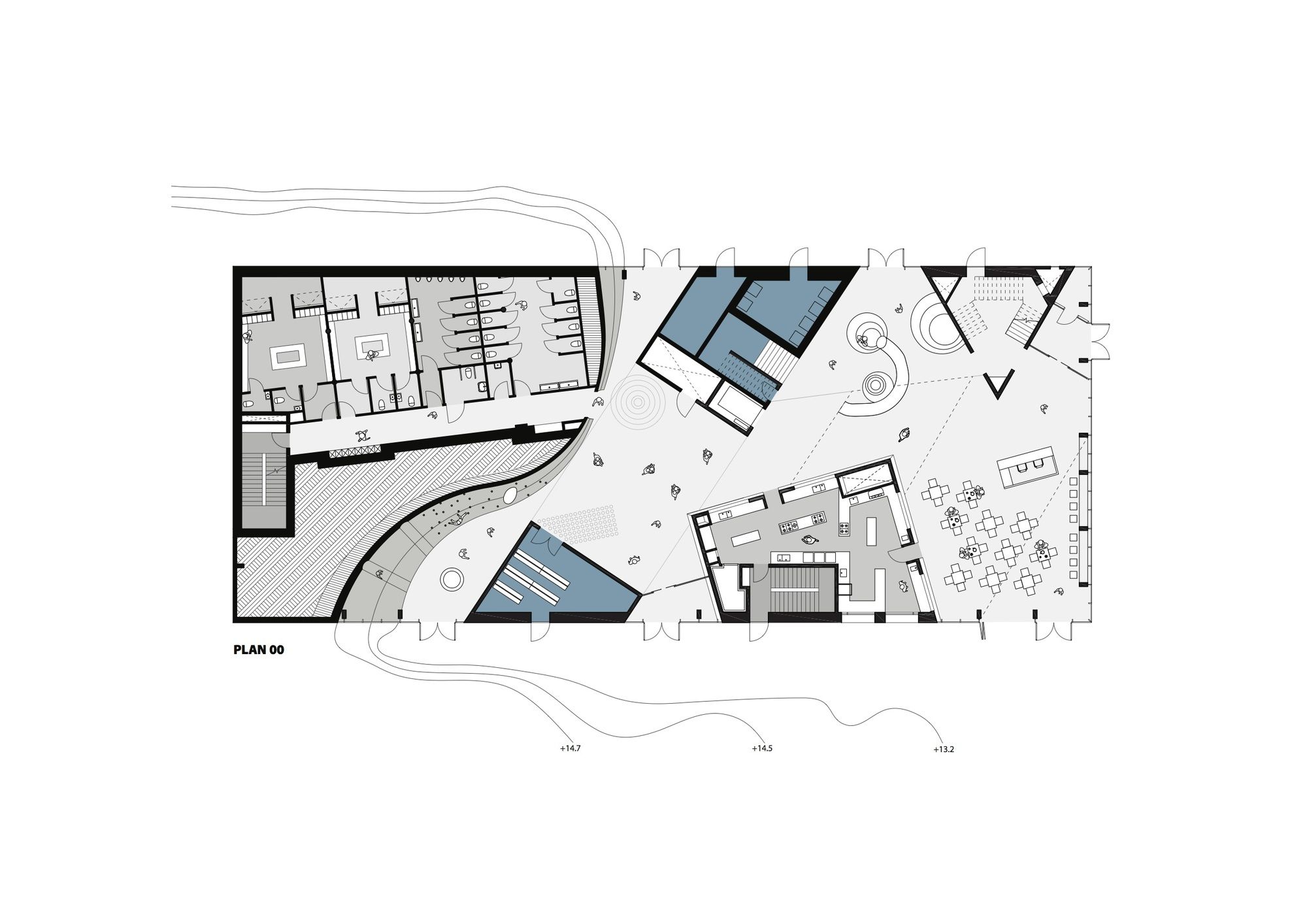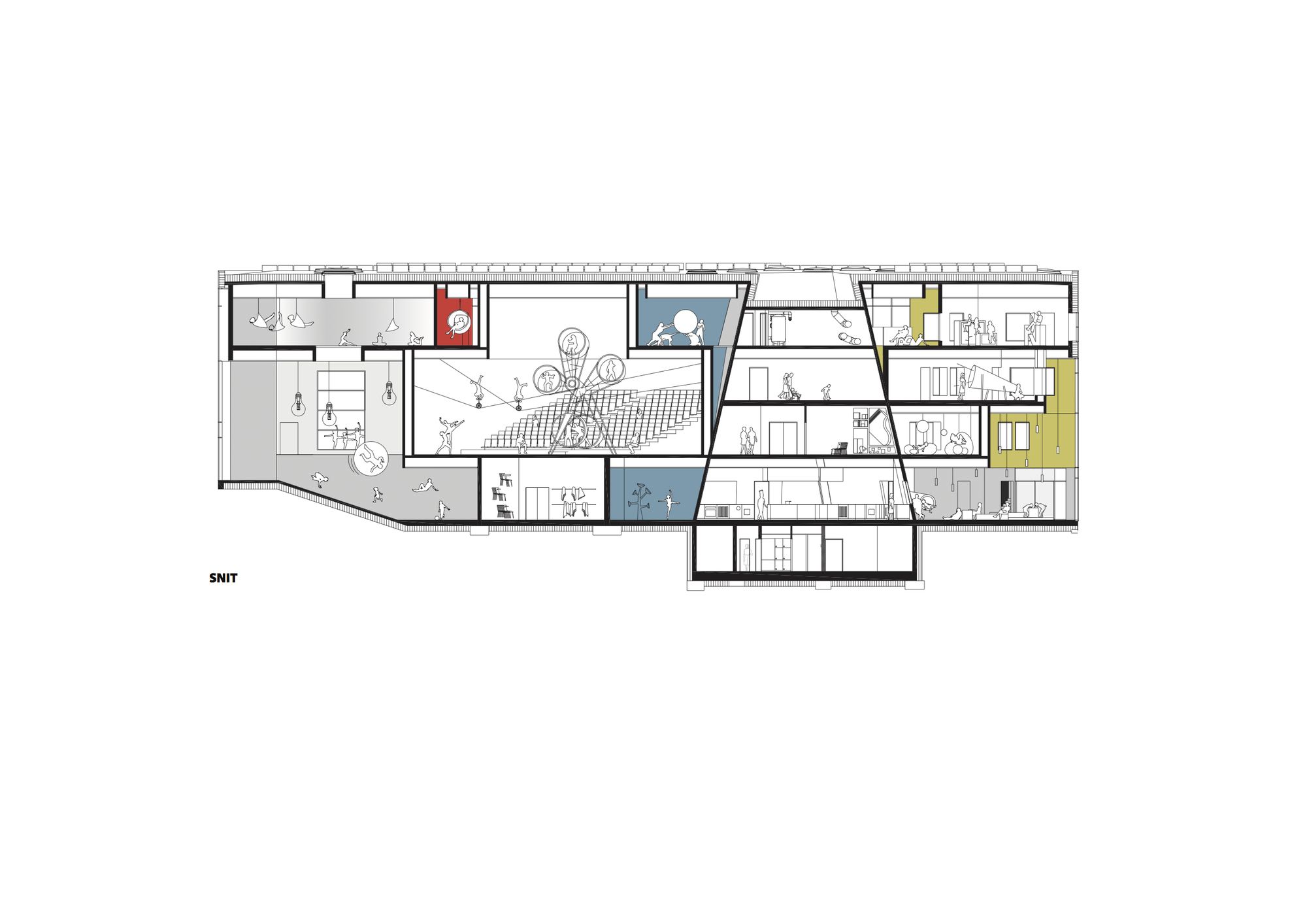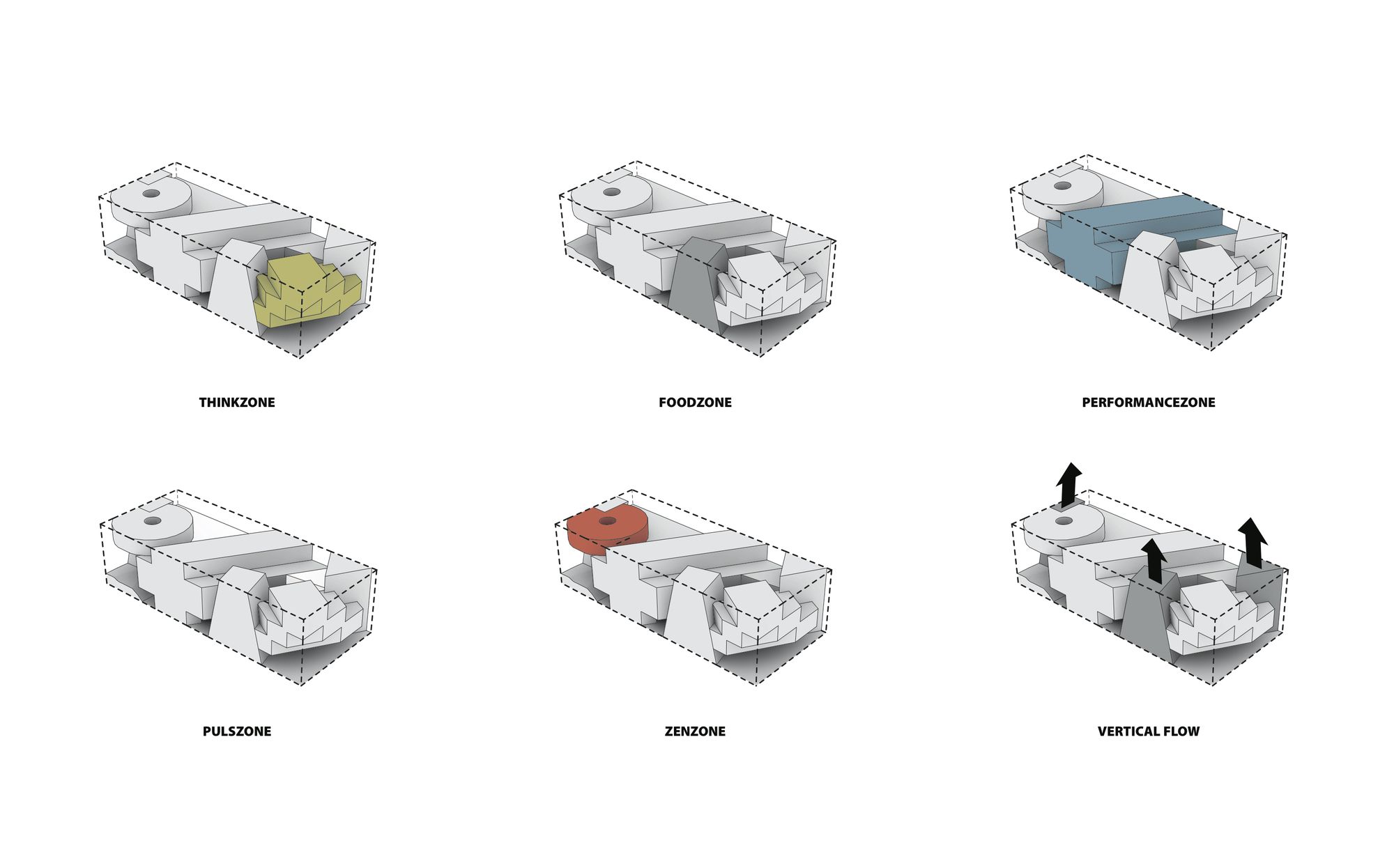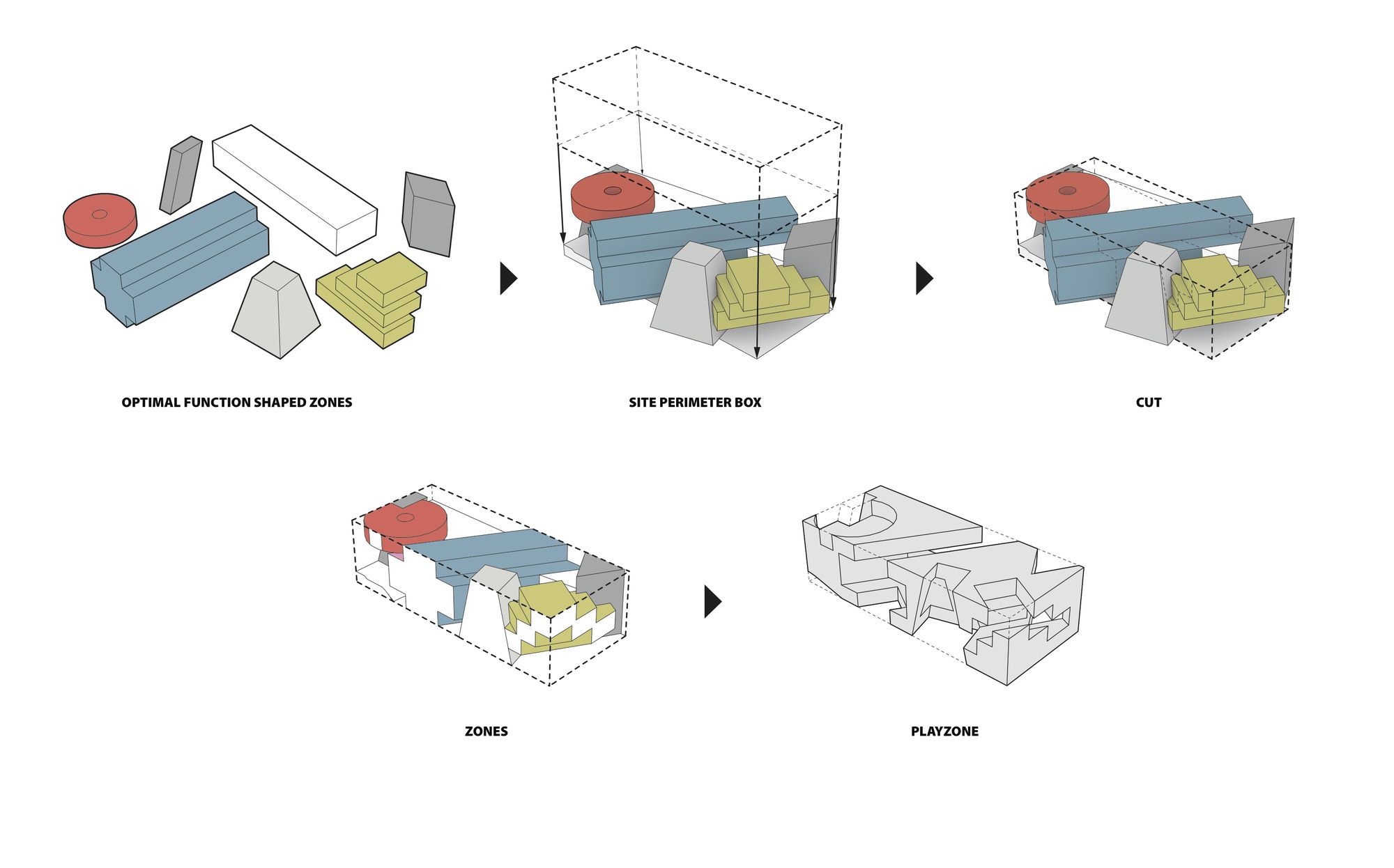Ku.Be House of Culture in Movement
The 3200 m2 Ku.Be House of Culture in Movement was designed for the municipality of Frederiksberg as a focal point for both the immediate community and also the wider area of Copenhagen; one that the people themselves could take ownership of and that would evolve its program based on the specific wants and needs of its users. The project is a new typology, developed out of the response to a brief that solely asked for a building that would bring people together and improve the quality of life. In reply MVRDV and ADEPT answered with one that blends theater, sport and learning into space where body and mind are activated to promote a more healthy life for everyone, regardless of age, ability or interest; creating links between people that wouldn’t otherwise connect with each other.The six primary volumes which make up Ku.Be, each with their own program, are clad in a unique color and material, clearly defining them within the building; from outside these shapes are hinted at in the fragmented tile façade. “We designed Ku.Be to encourage the unexpected,” explains MVRDV co-founder Jacob van Rijs. “Larger volumes are suited to hold performances or public meetings, smaller ones can be for exhibitions or debates. The fast-paced rooms are perfect for dance or parkour, and zen rooms give you the contrast of yoga or meditation. It’s between these volumes where the real fun will happen, though; spaces where we hint at a use, but which will become entirely user-defined.”
The route through the building focuses on developing and encouraging alternate forms of movement. The Labyrinth gets people on their hands and knees climbing through a three-dimensional network of cubes from the second to third floors; or alternatively, they could take the Mousetrap, a vertical maze. A net which spans several floors throughout the building, lets users climb up from the floor to floor – suspended over the voids – and slides and fireman poles offer a fast way to get back down. “In Ku.Be we tried to turn your average experience of a building on its head,” tells ADEPT co-founder, Martin Krogh. “What would otherwise be a simple, mindless journey through the building turns into an exploration and discovery of movement. Here it’s you that defines the route, however, you want: climbing, sliding, crawling … jumping.” To cater for all abilities and ages, both easier and more standard ways of moving around are provided but even then a visual connection is maintained throughout Ku.Be.The urban gardens outside form the connection between Ku.Be and the urban realm, playing an important role in expressing the eight volumes and the activities happening inside. The diverse landscape – a system of microclimates with changing sounds, lights, and scents which blend seamlessly into a hill with integrated slides – reaches out into the gardens and ends in an amphitheater outside.
By becoming an extension of the urban landscape of Frederiksberg and integrating the community to such an extent, the House of Culture and Movement looks to become an incubator for further development within the neighborhood.
Ku.Be is MVRDV’s third completed project in Denmark. Ragnarok, a museum for youth culture, pop, and rock music opened in April of this year in nearby Roskilde and the Frøsilos, a conversion of two old silos into housing, was completed in Copenhagen in 2005.
Aside from Ku.Be, ADEPT has completed a number of cultural and educational buildings within the last few years. Among these is Dalarna Media Library in Falun, Sweden, Cortex in Odense, Denmark and UCN in Aalborg, Denmark.
MVRDV and ADEPT achieved the project through close collaboration with Soeren Jensen Engineers who provided the complex structural engineering to support the visionary architecture; SLA landscape architects, who designed the urban garden surrounding Ku.Be , and Max Fordham LLP to achieve environmental comfort throughout the building. Ku.Be was made possible by major contributions by Realdania and LOA (Lokale- & Anlægsfonden).
Project Info
Architects : MVRDV, ADEPT
Location : Frederiksberg, Denmark
Year : 2016
Type : Cultural
Photographs : Adam Mørk
photograph by © Adam Mørk
photograph by © Adam Mørk
photograph by © Adam Mørk
photograph by © Adam Mørk
photograph by © Adam Mørk
photograph by © Adam Mørk
photograph by © Adam Mørk
photograph by © Adam Mørk
photograph by © Adam Mørk
photograph by © Adam Mørk
photograph by © Adam Mørk
photograph by © Adam Mørk
photograph by © Adam Mørk
photograph by © Adam Mørk
photograph by © Adam Mørk
photograph by © Adam Mørk
photograph by © Adam Mørk
photograph by © Adam Mørk
photograph by © Adam Mørk
photograph by © Adam Mørk
photograph by © Adam Mørk
photograph by © Adam Mørk
photograph by © Adam Mørk
photograph by © Adam Mørk
photograph by © Adam Mørk
2nd Floor Plan
1st Floor Plan
3rd Floor Plan
Ground Floor Plan
Section
Zones Diagram
Concept Diagram


